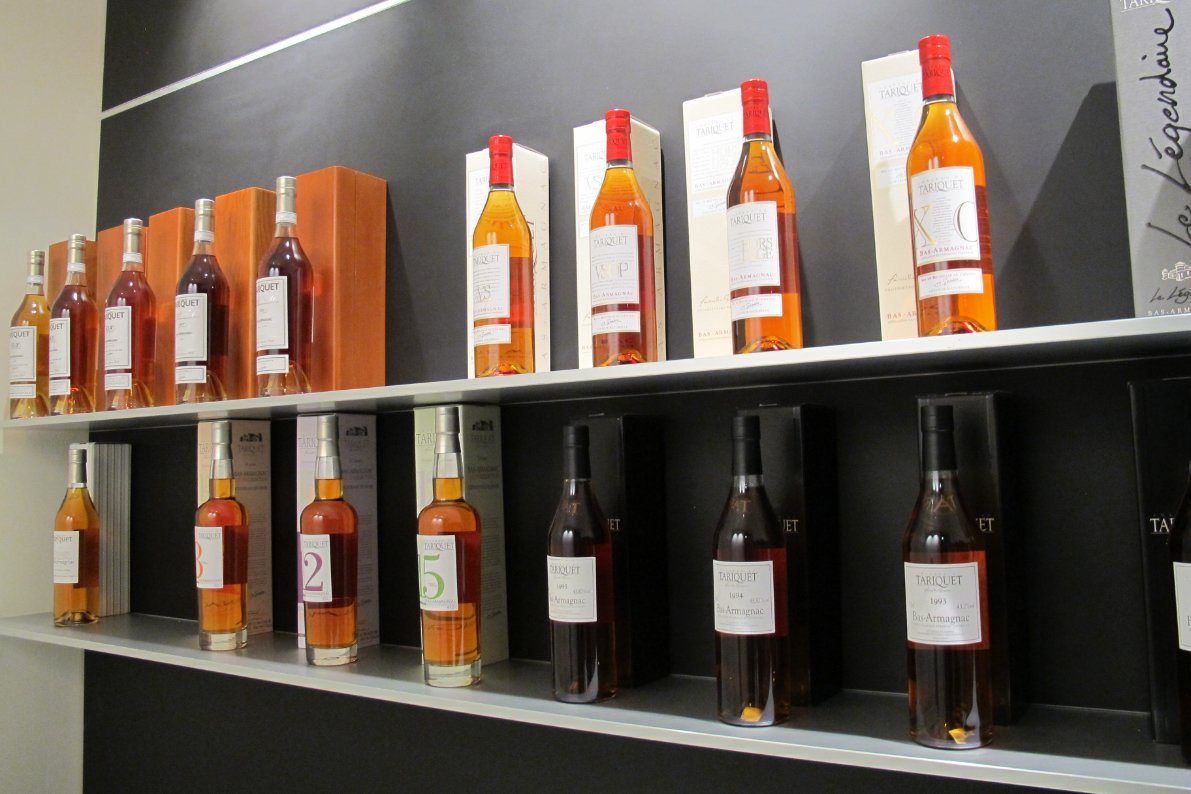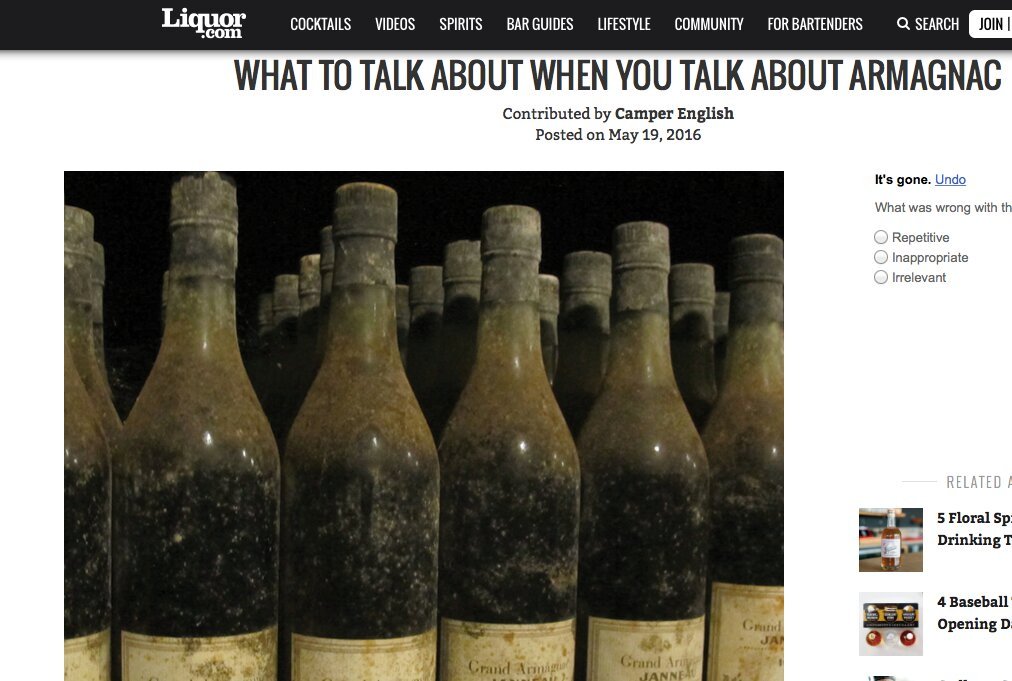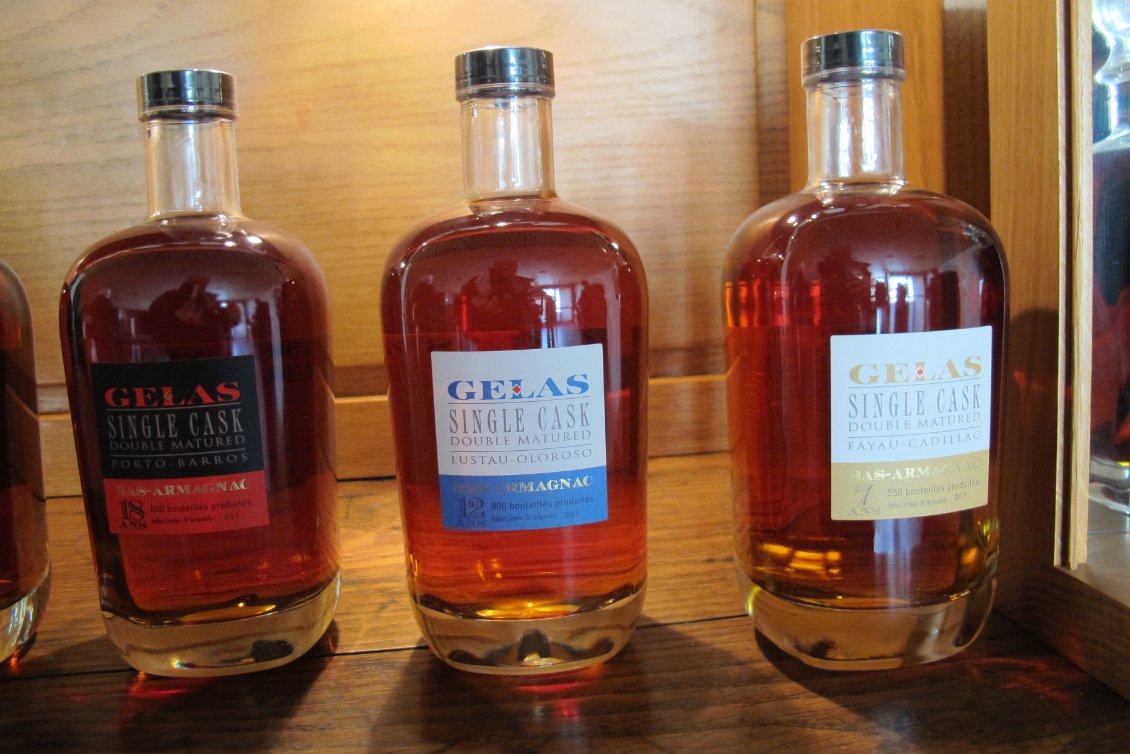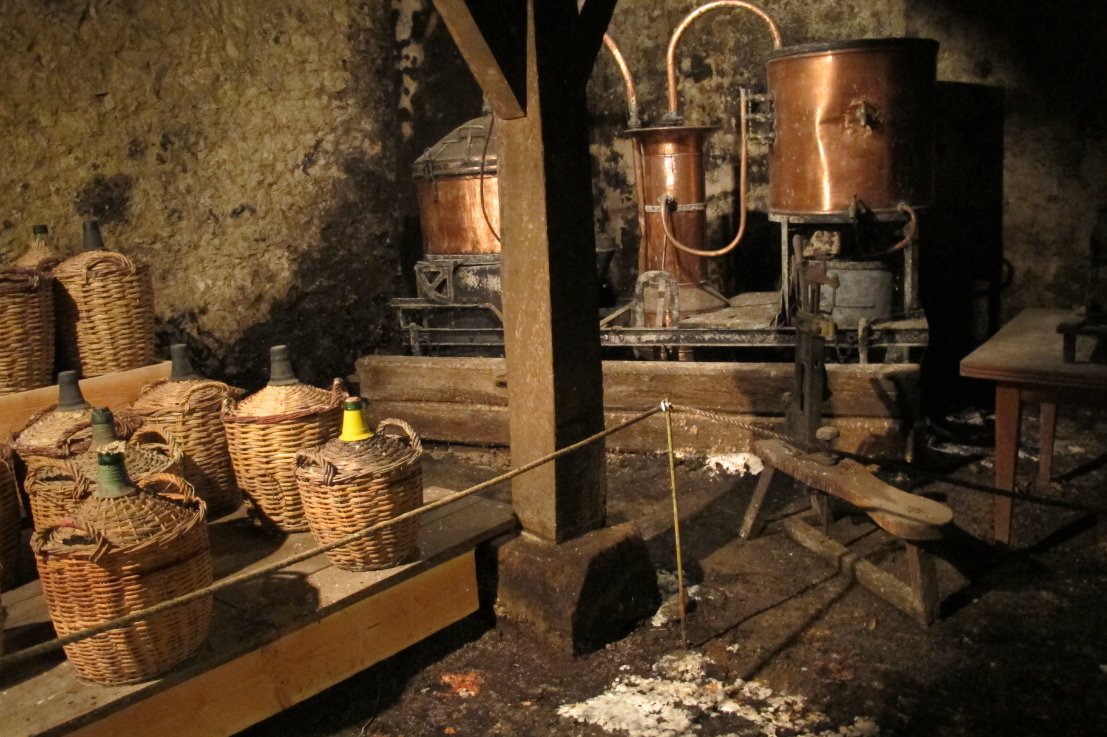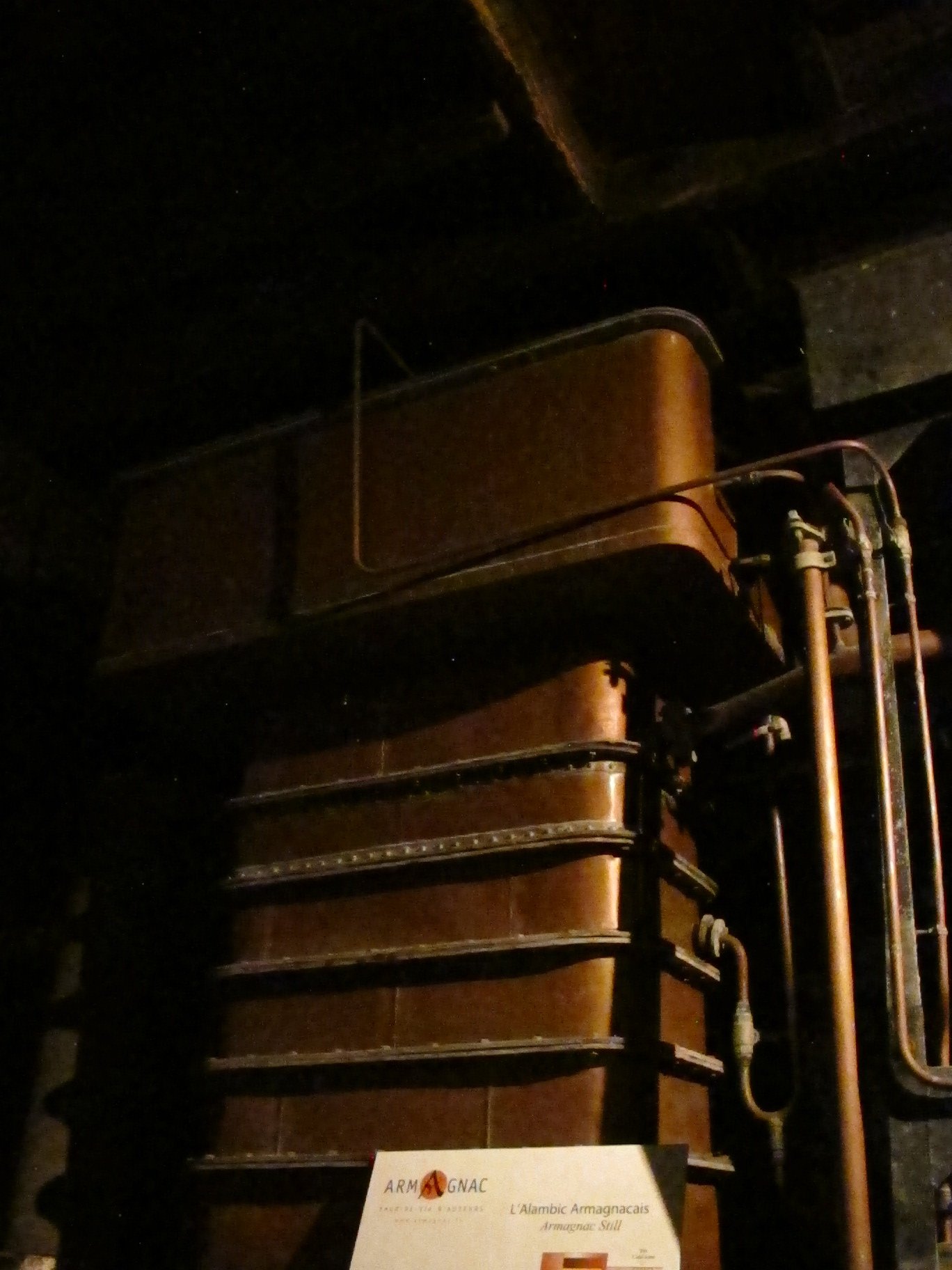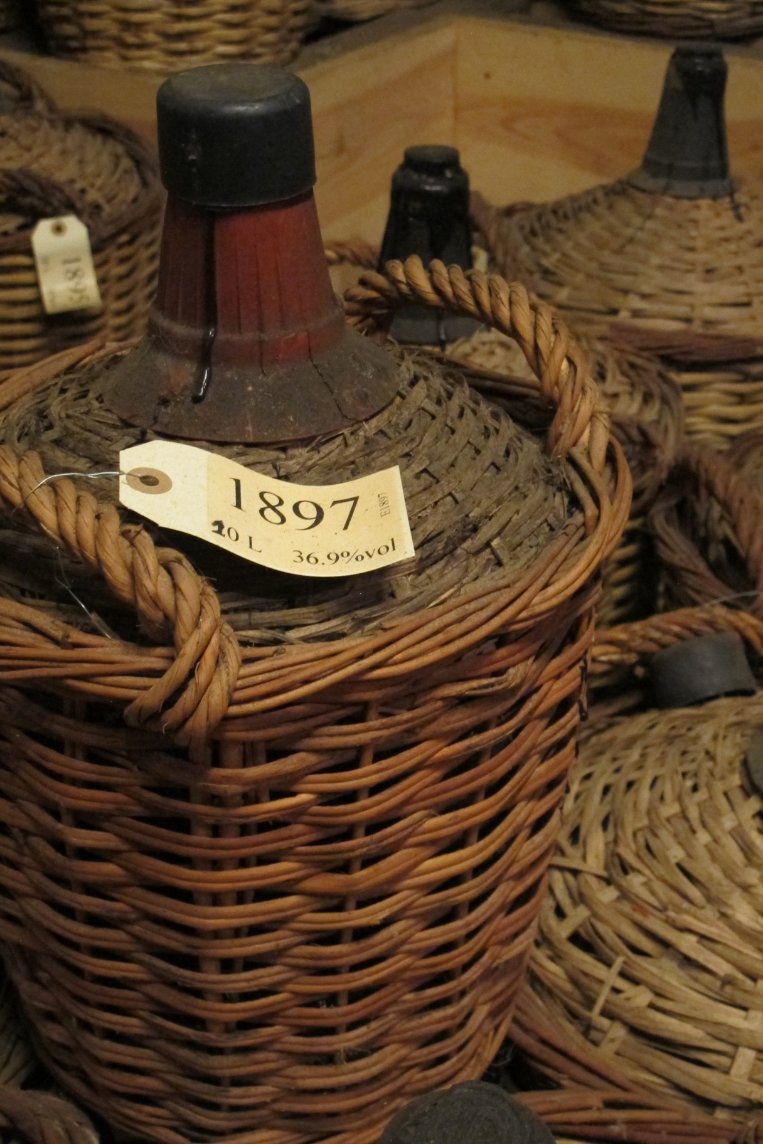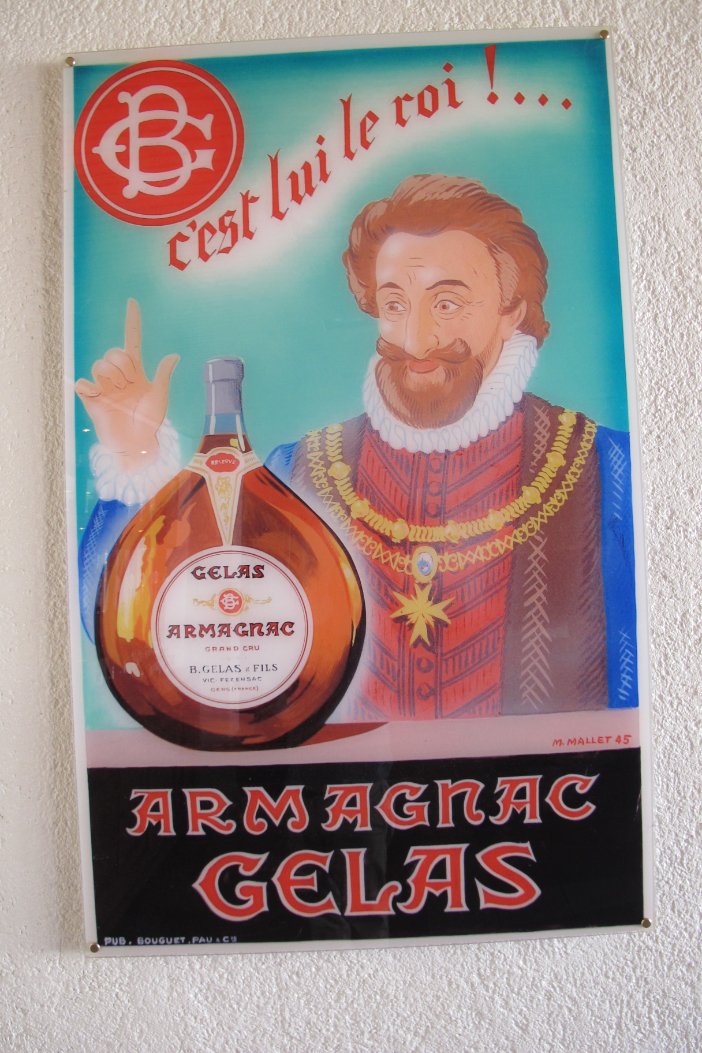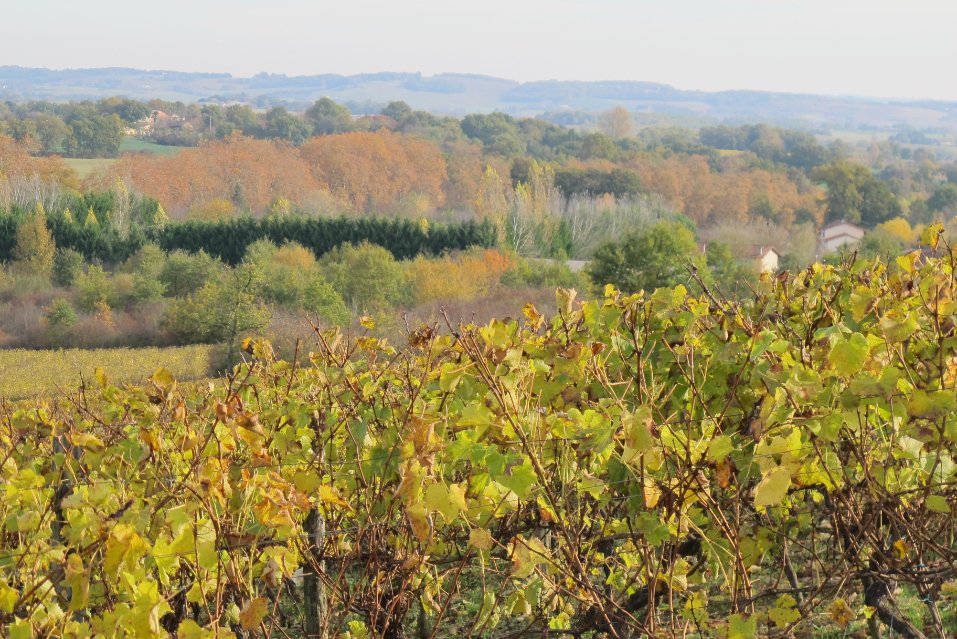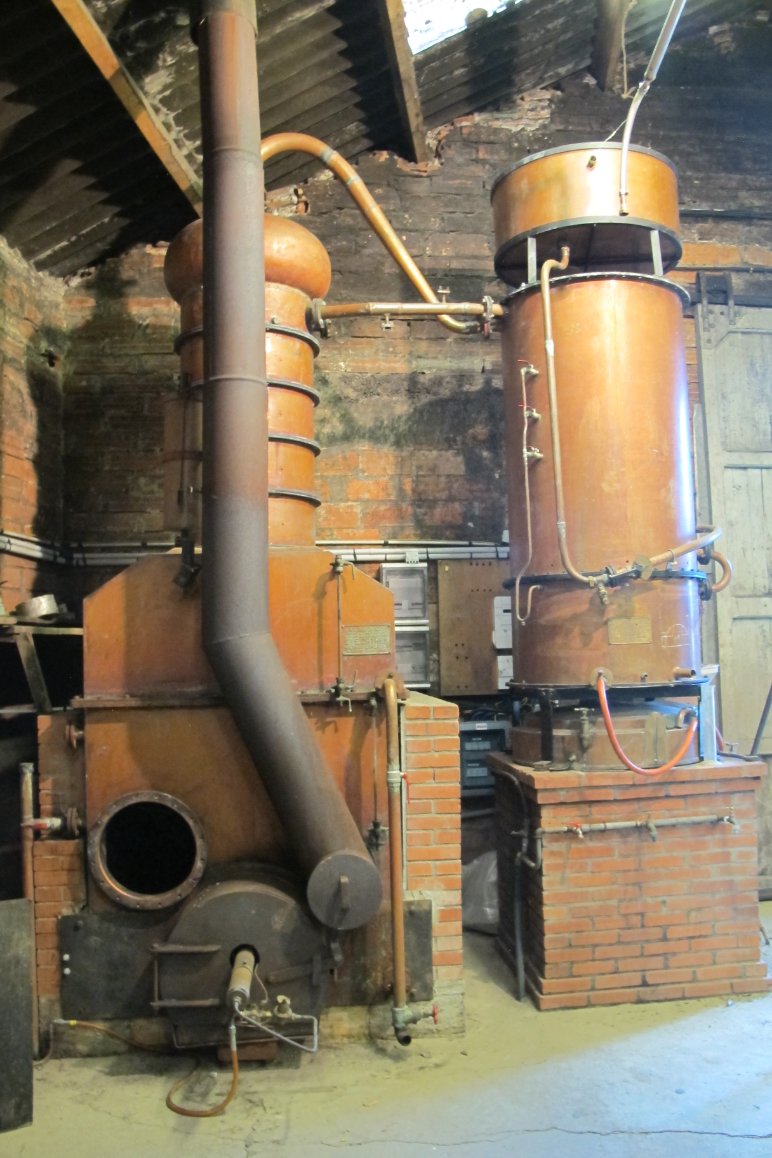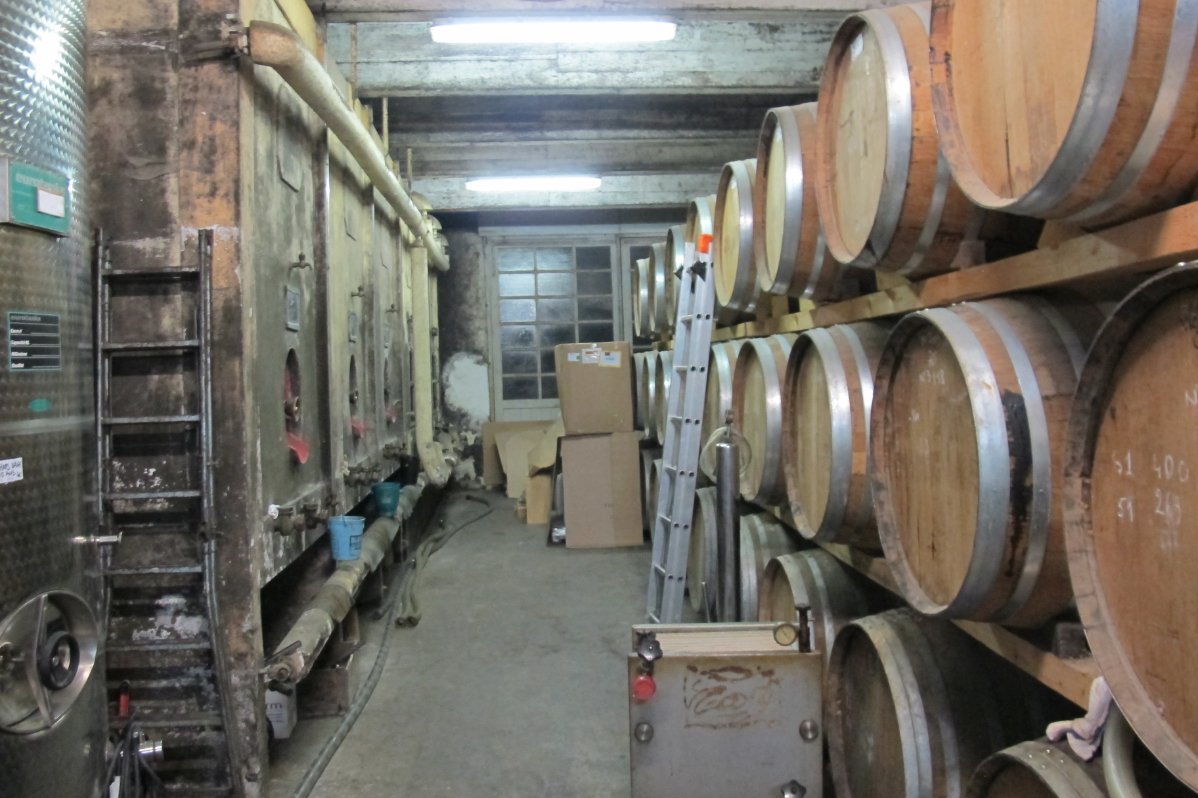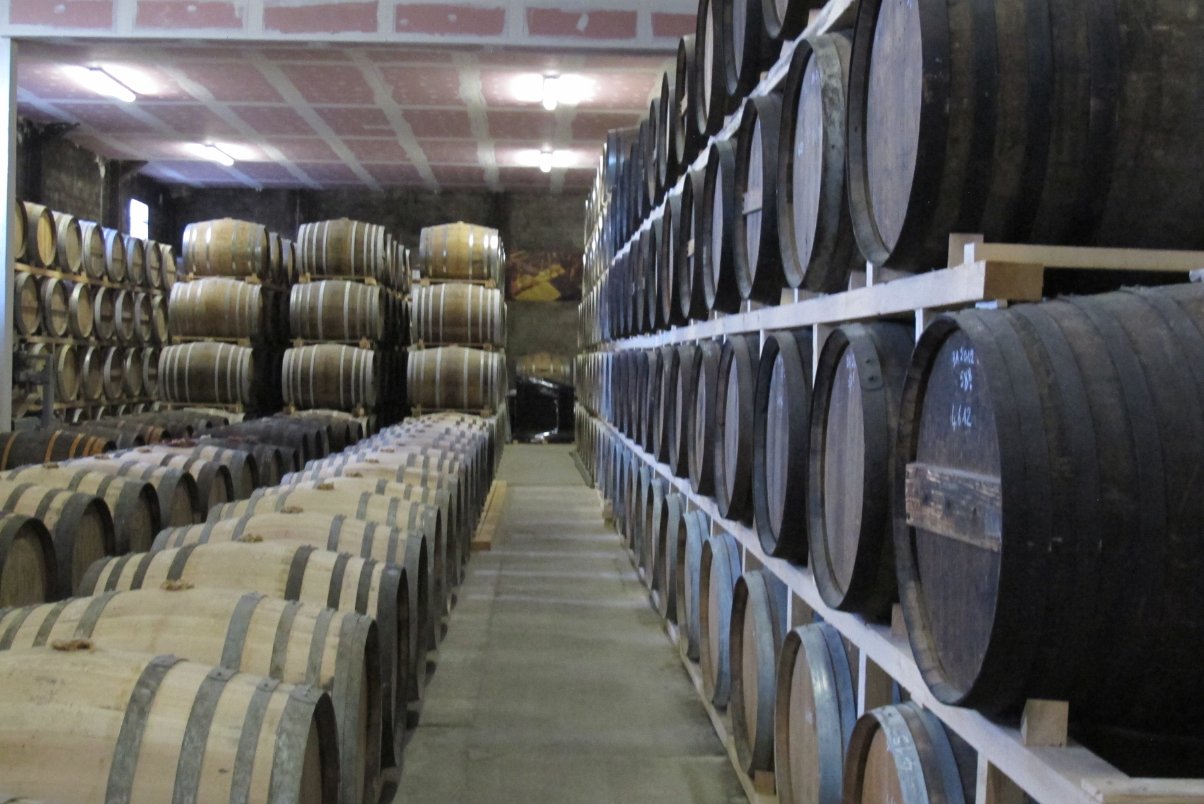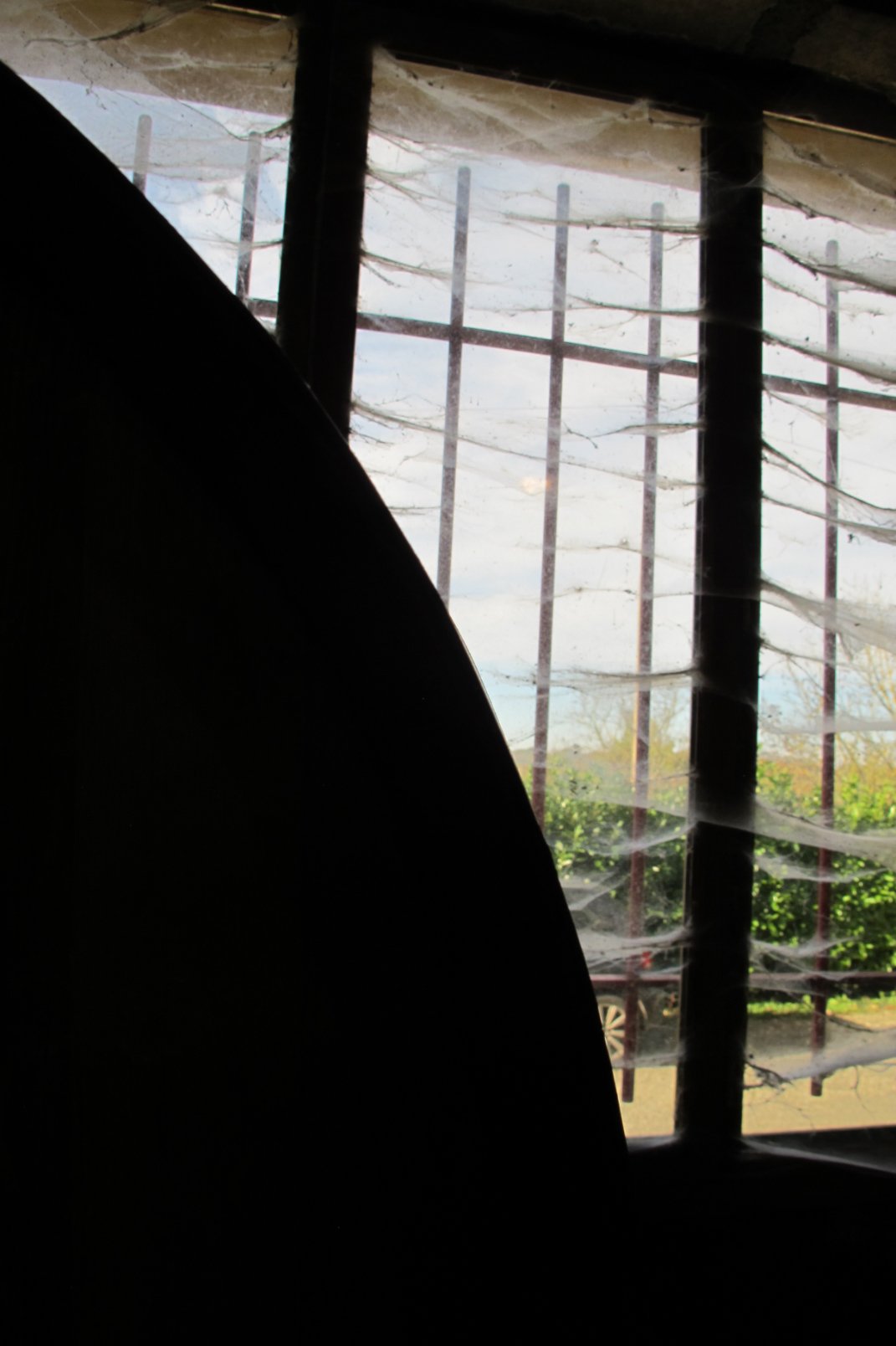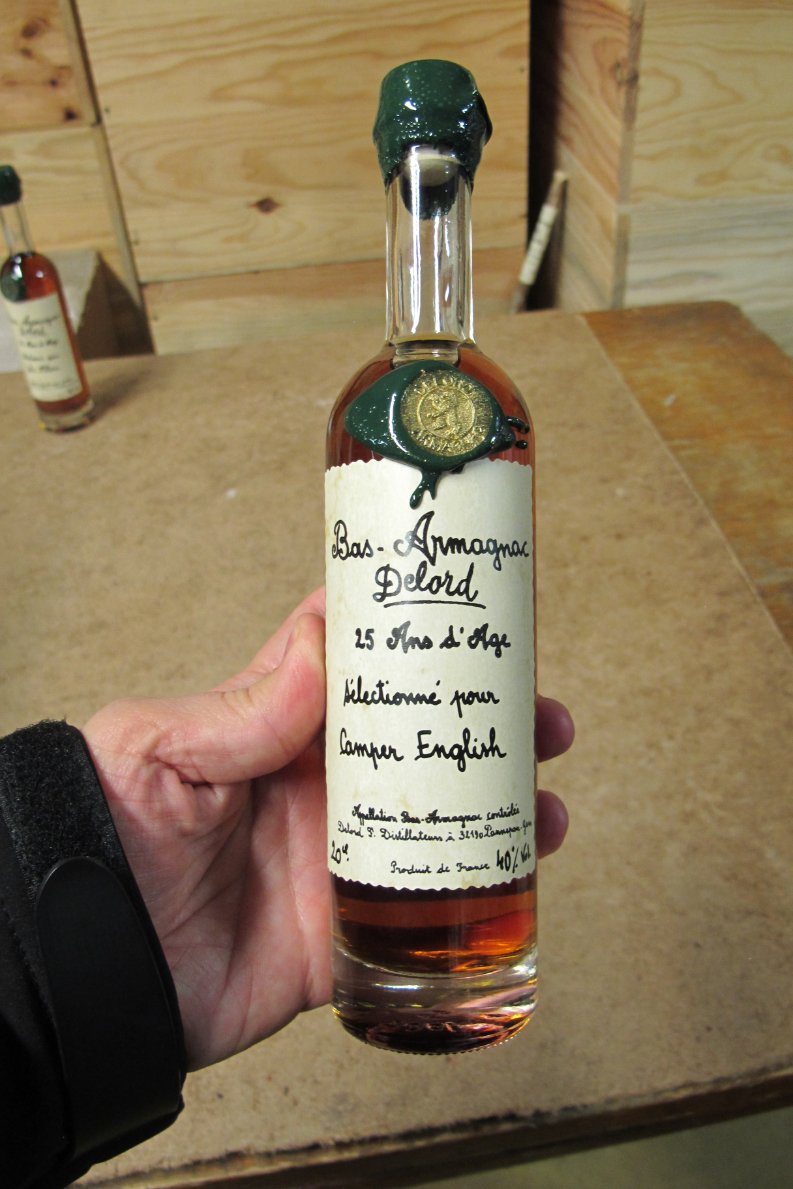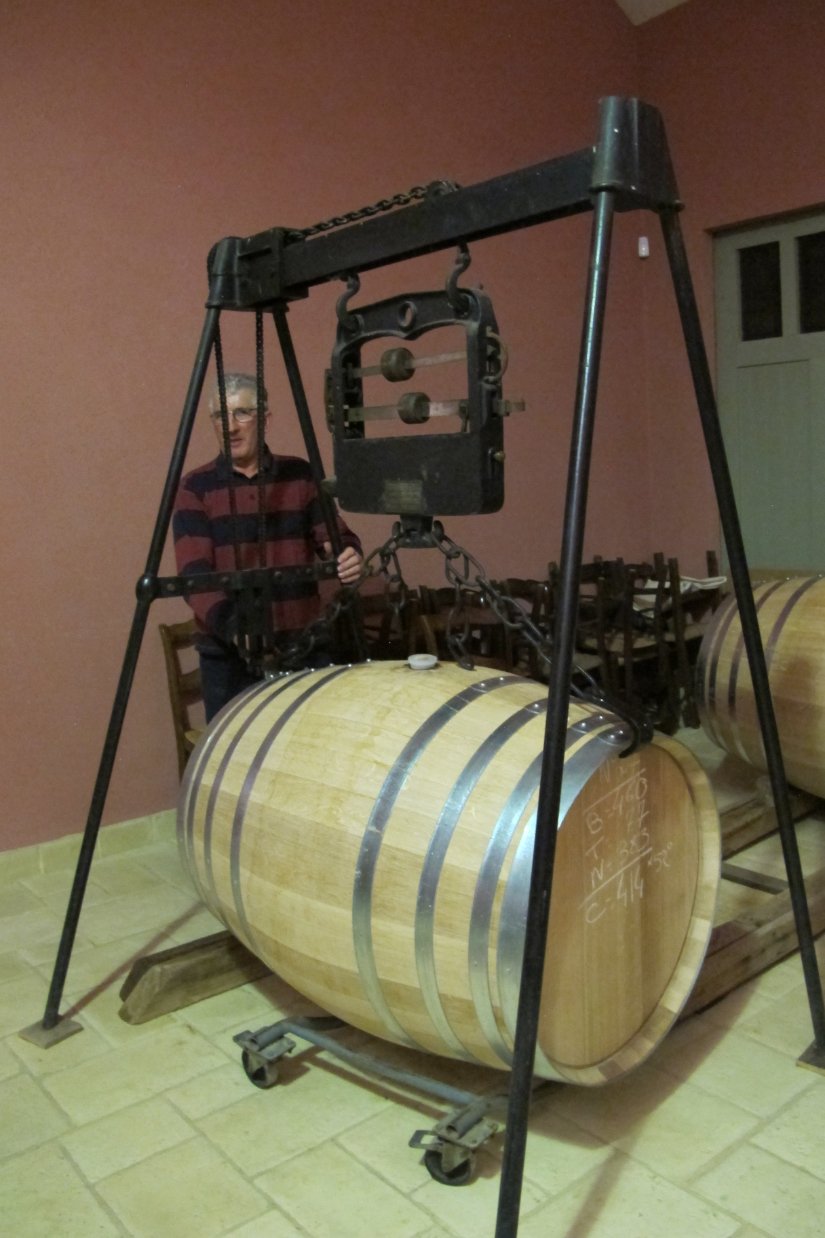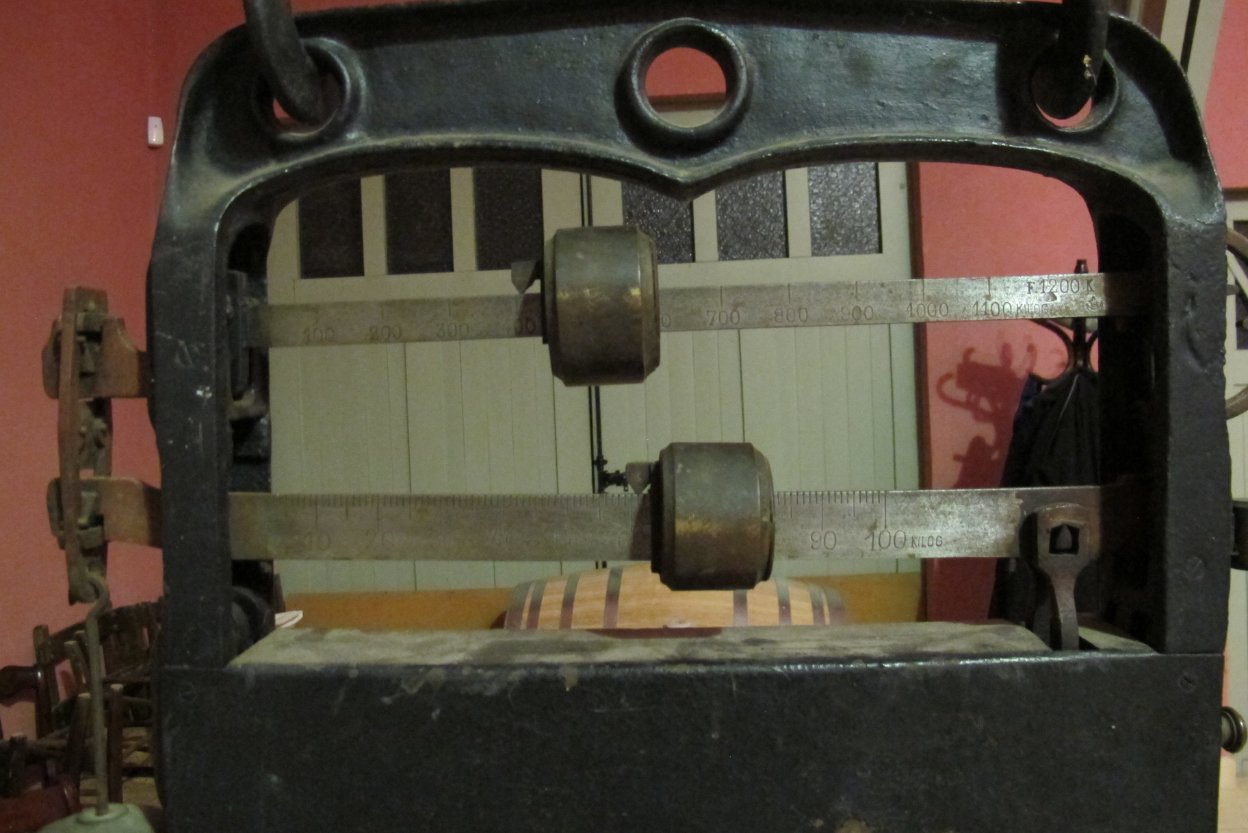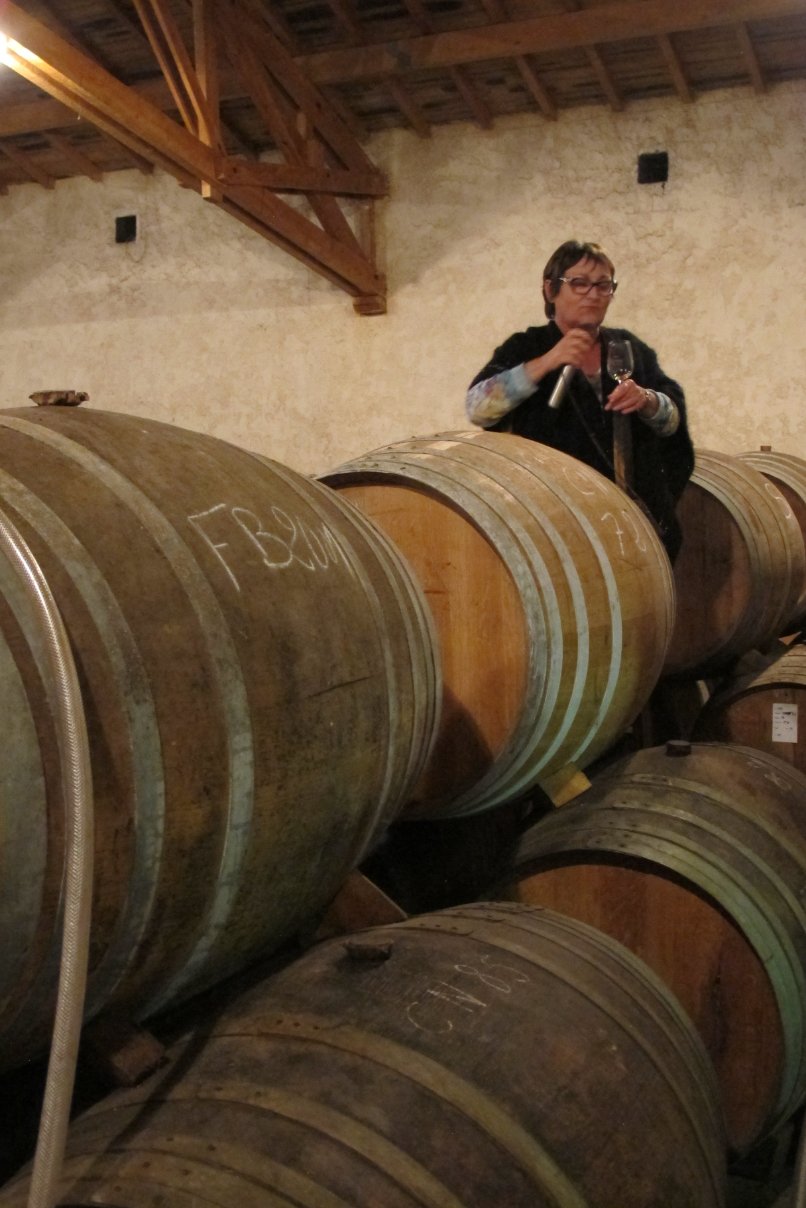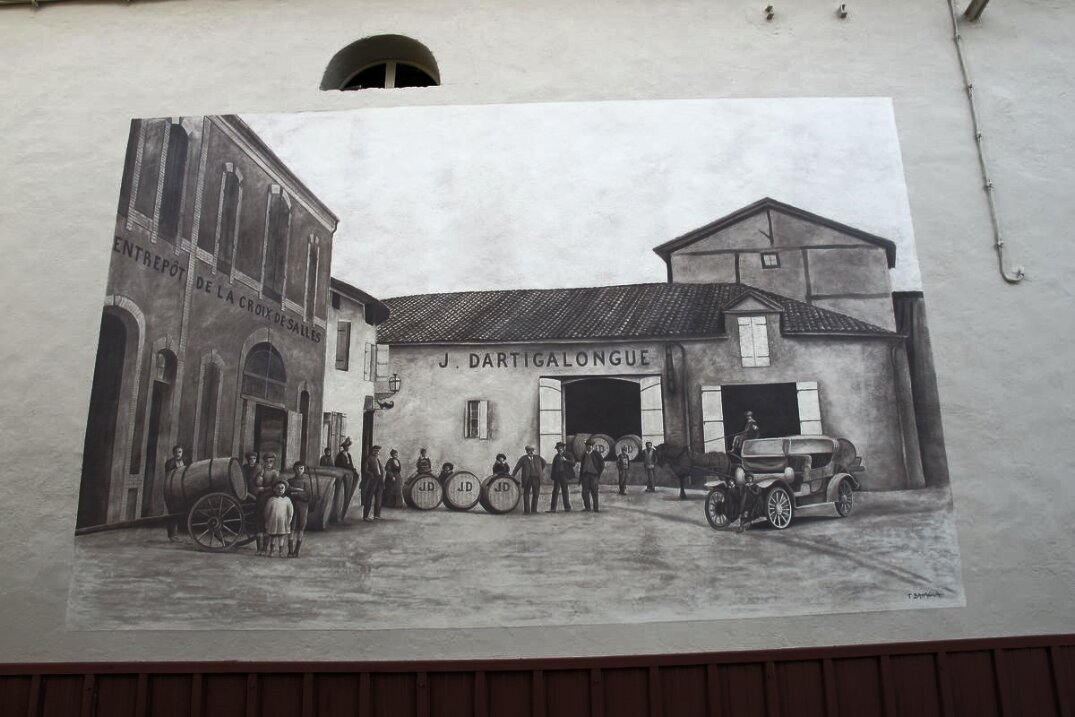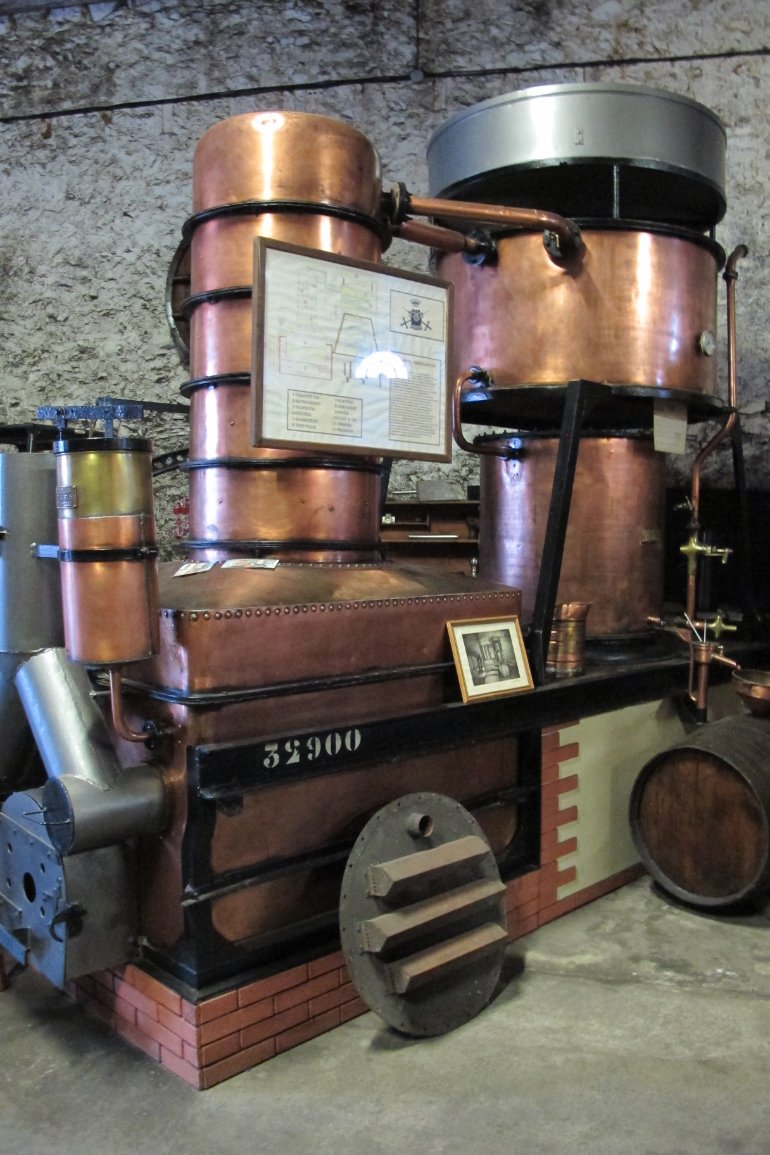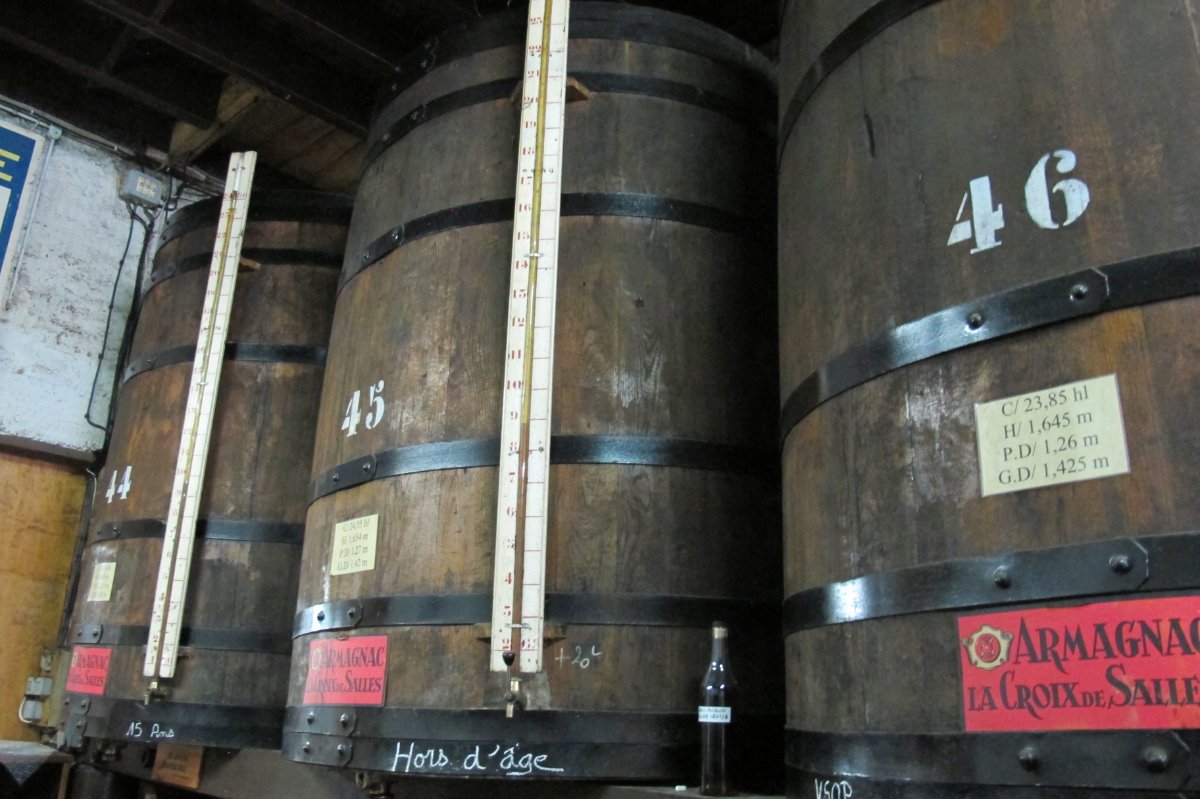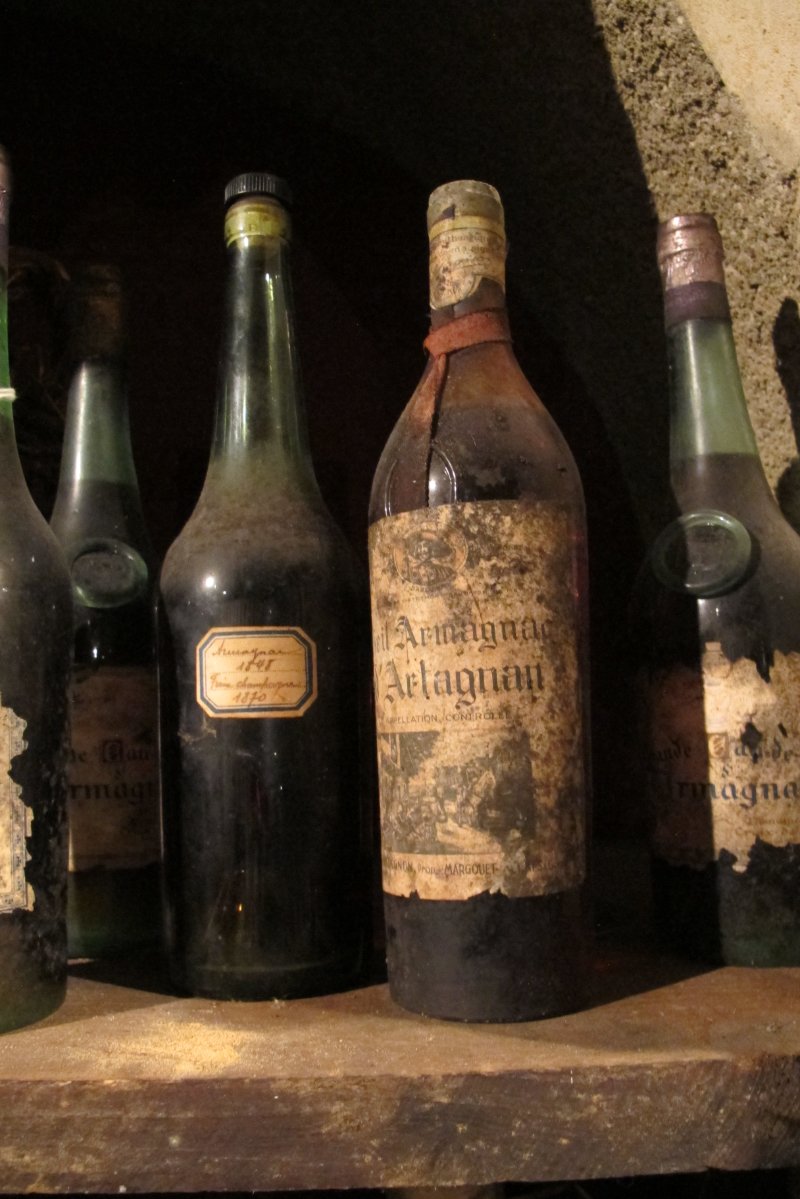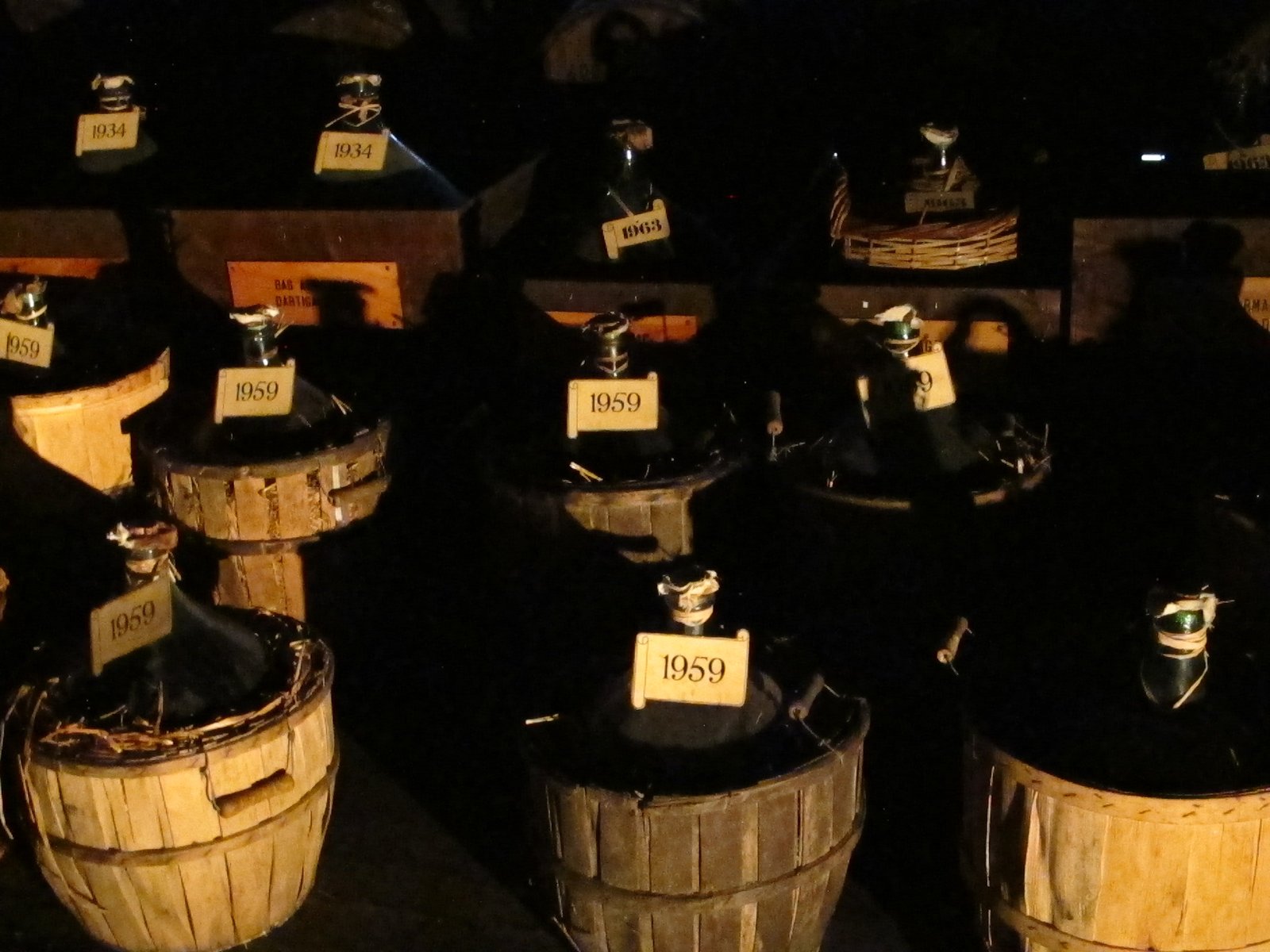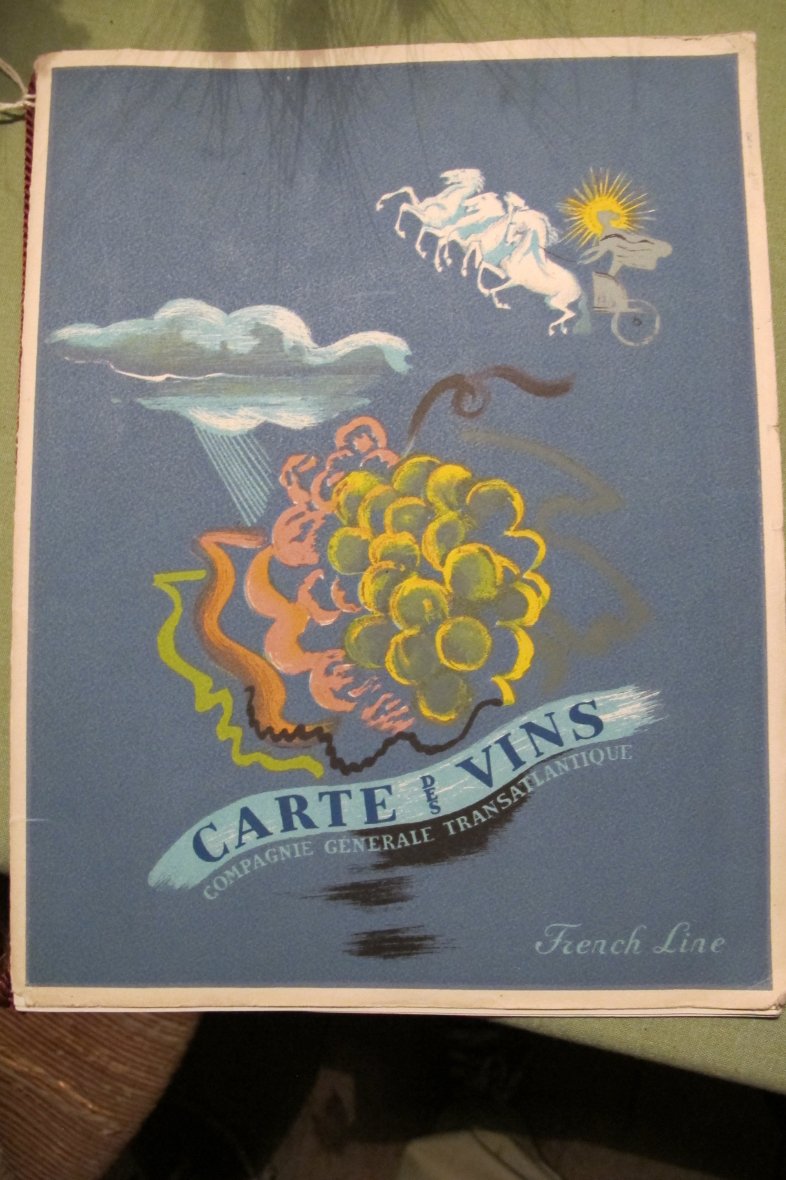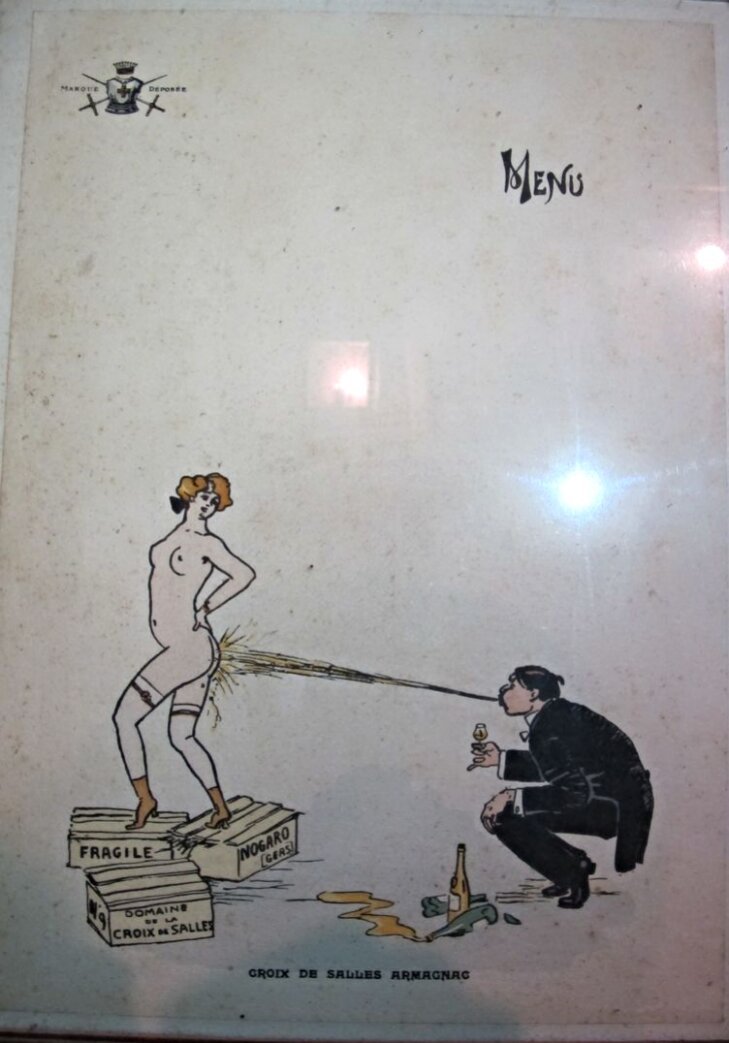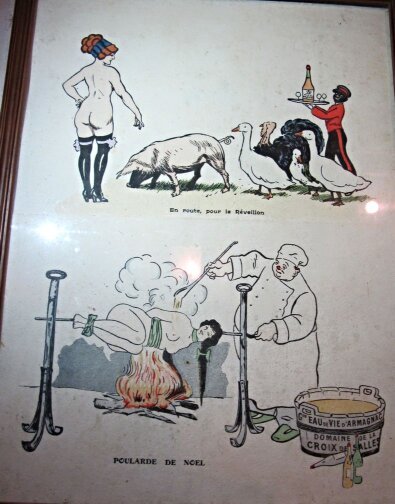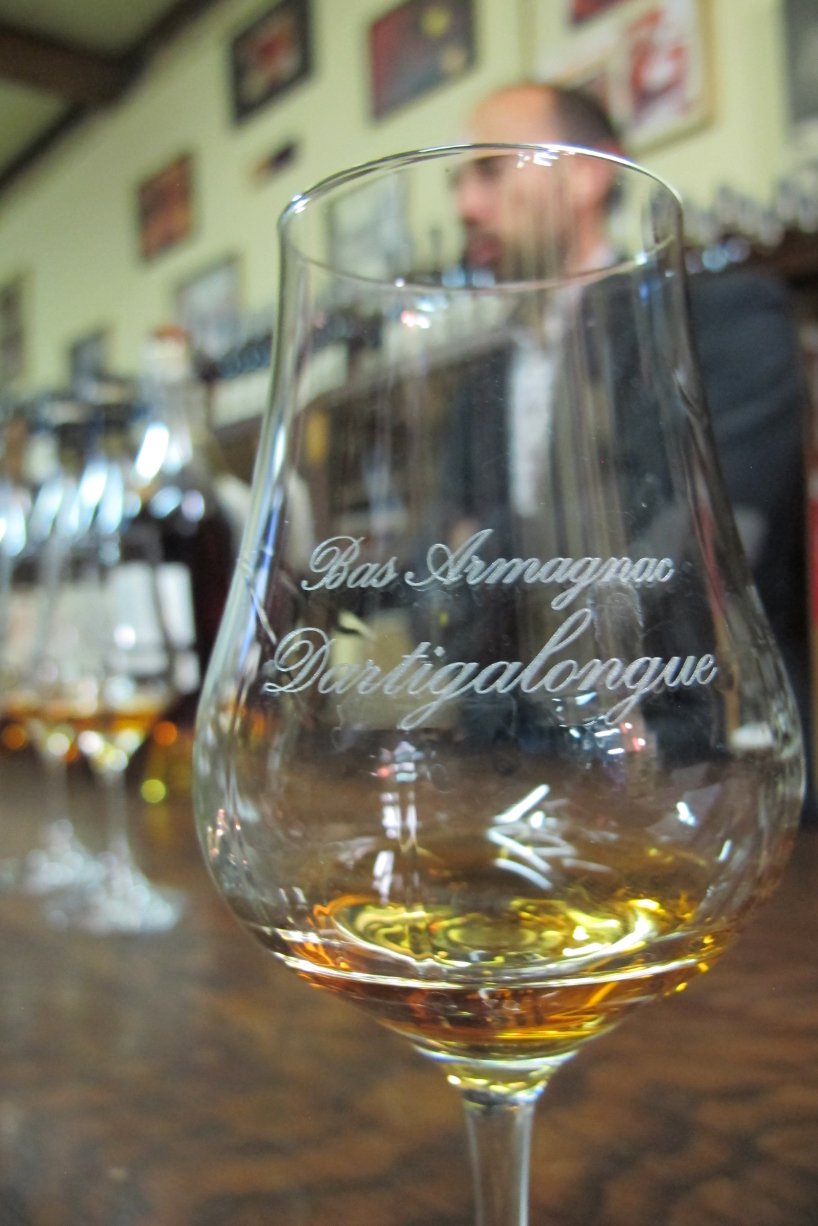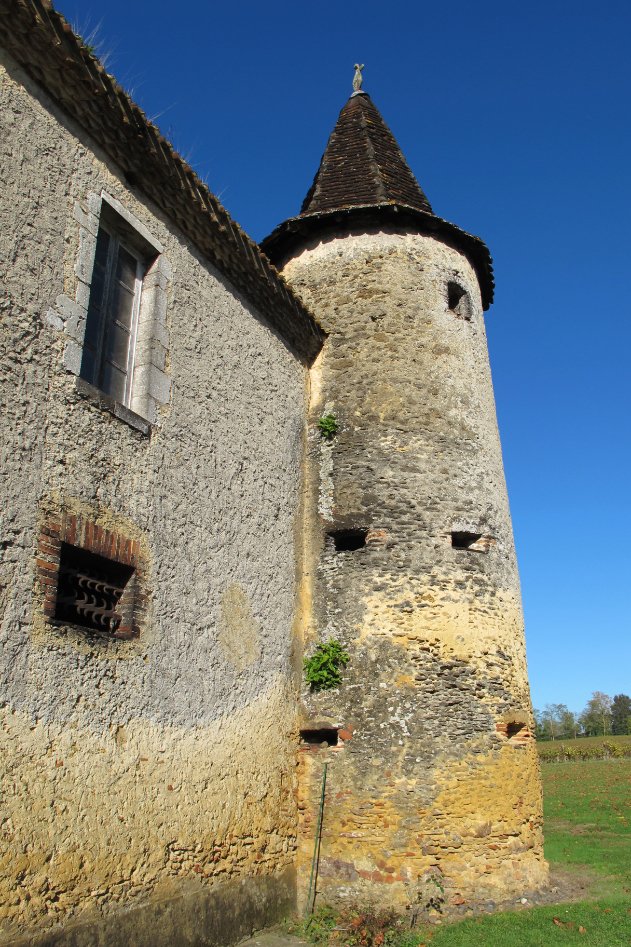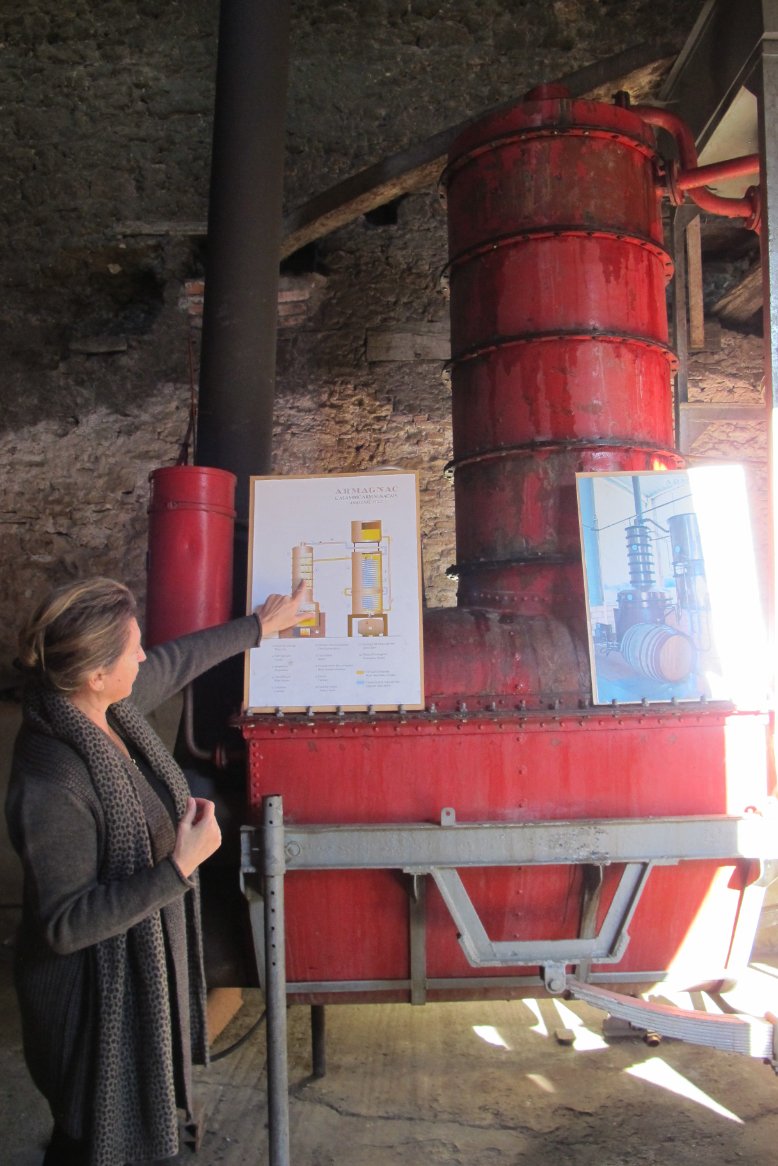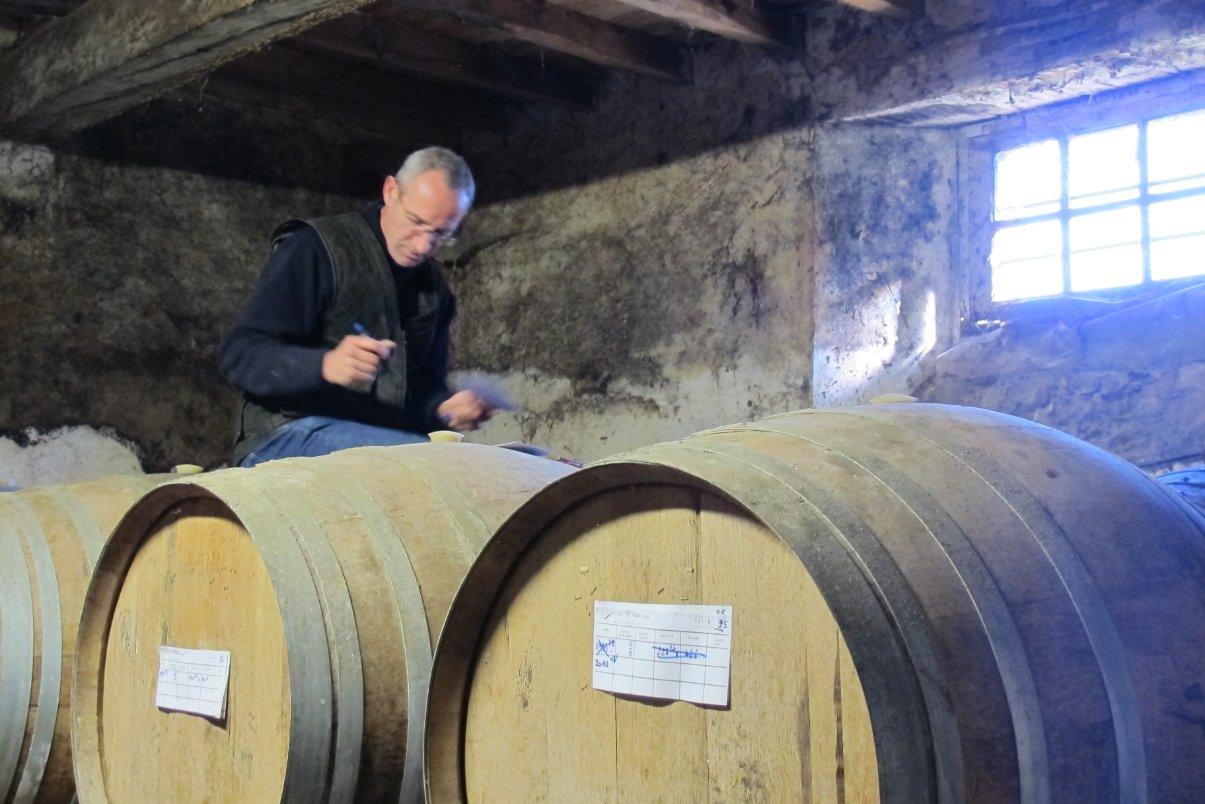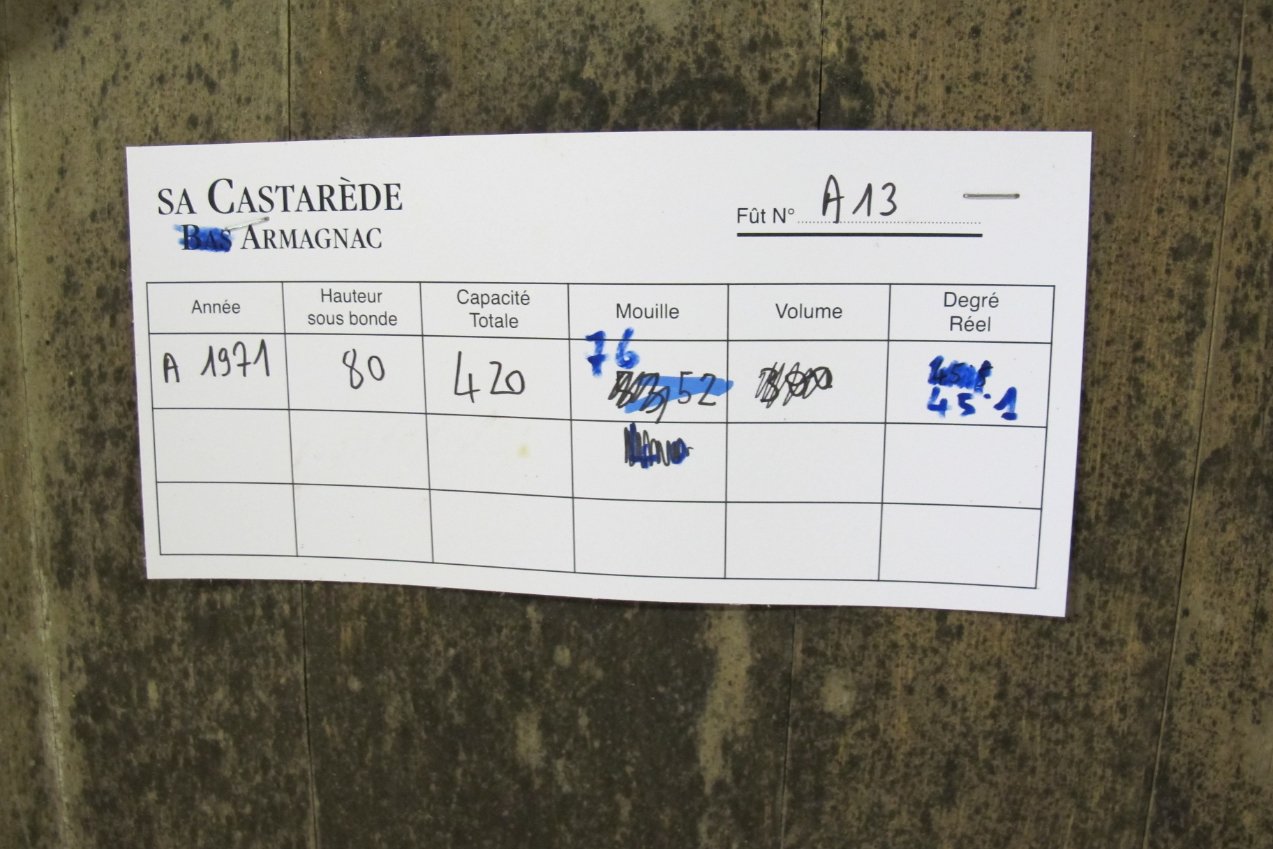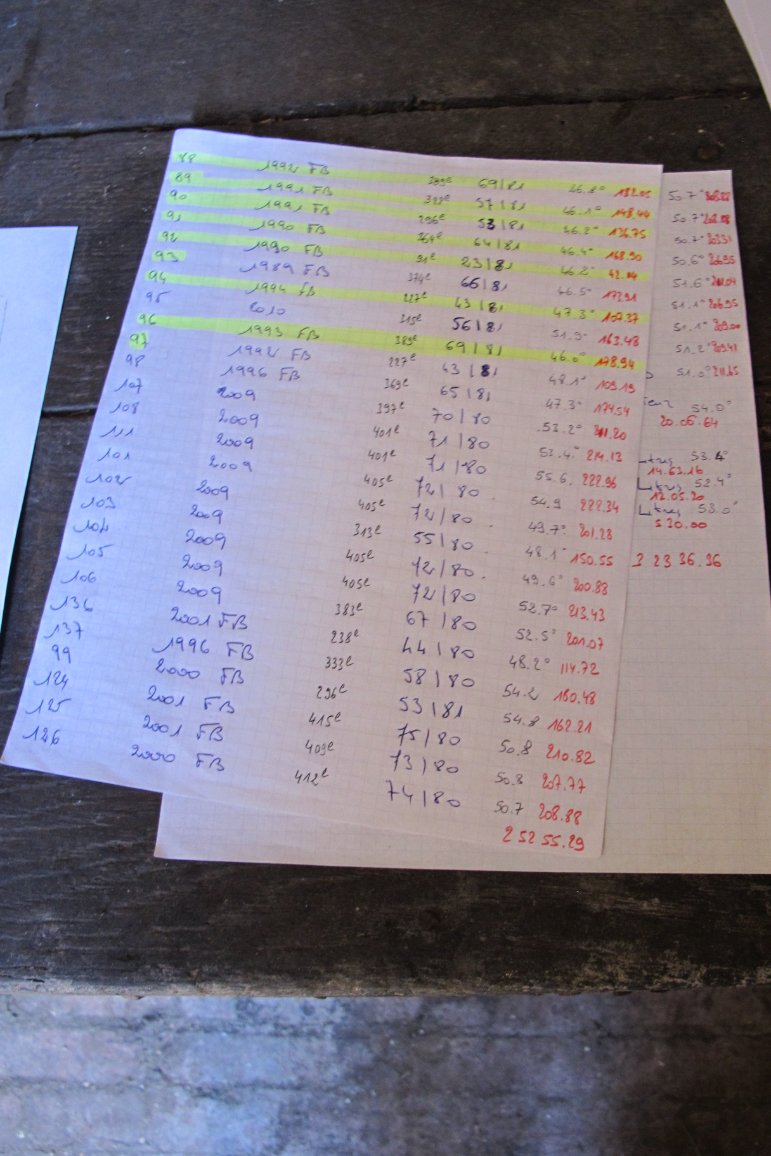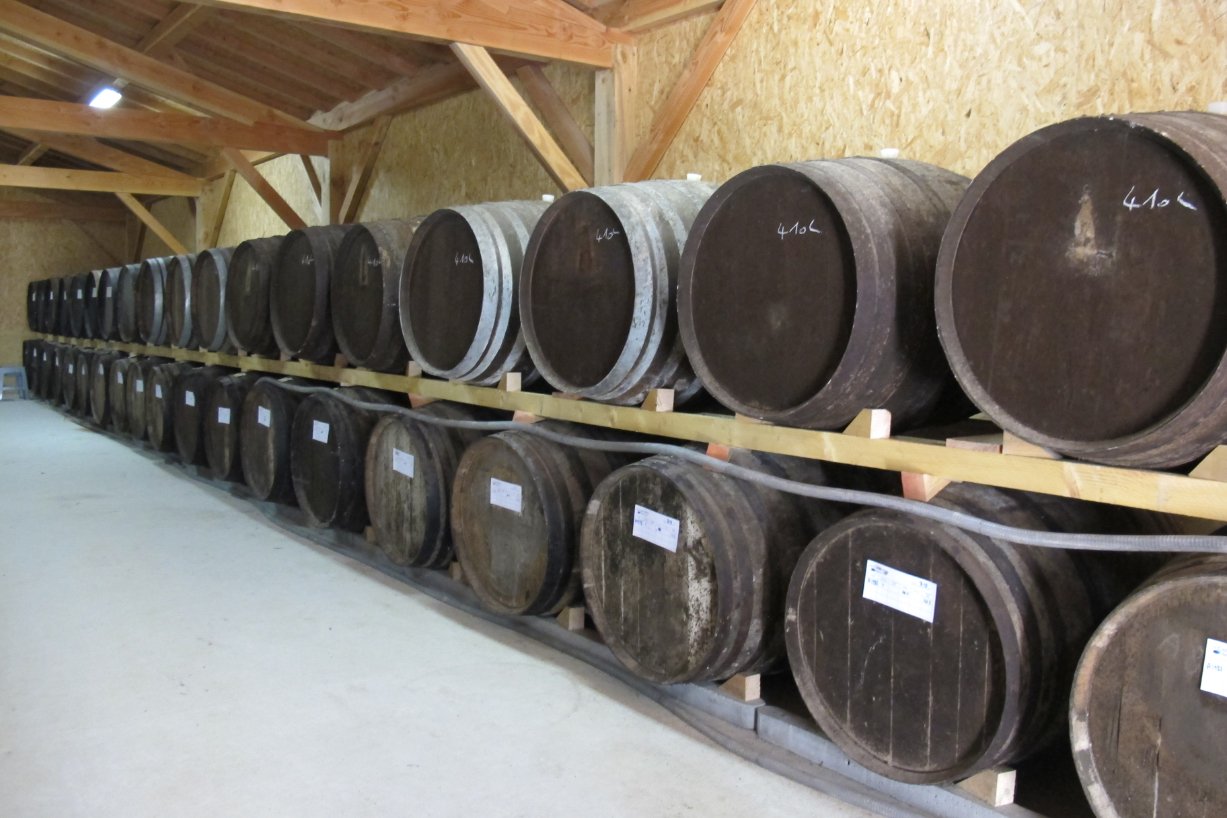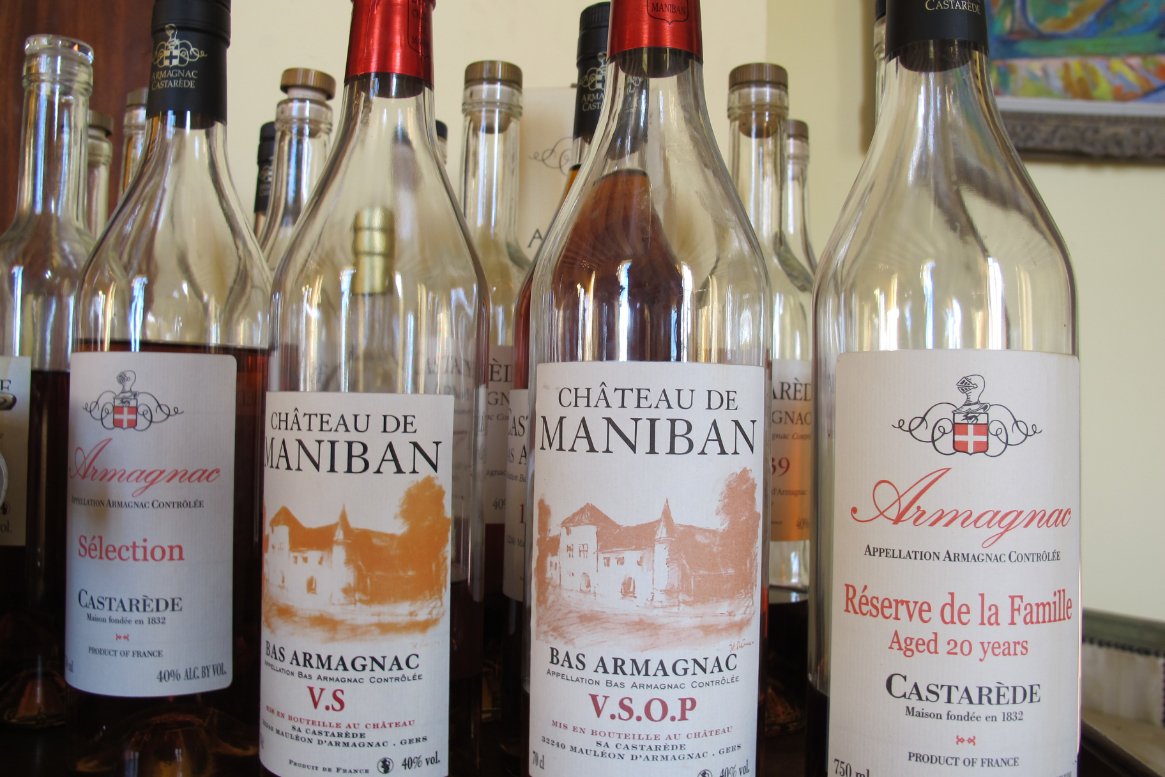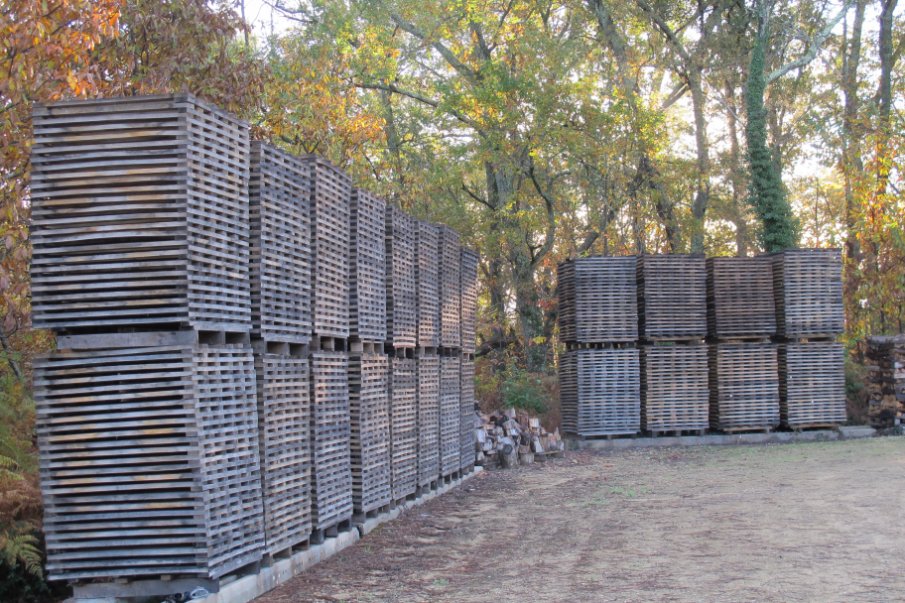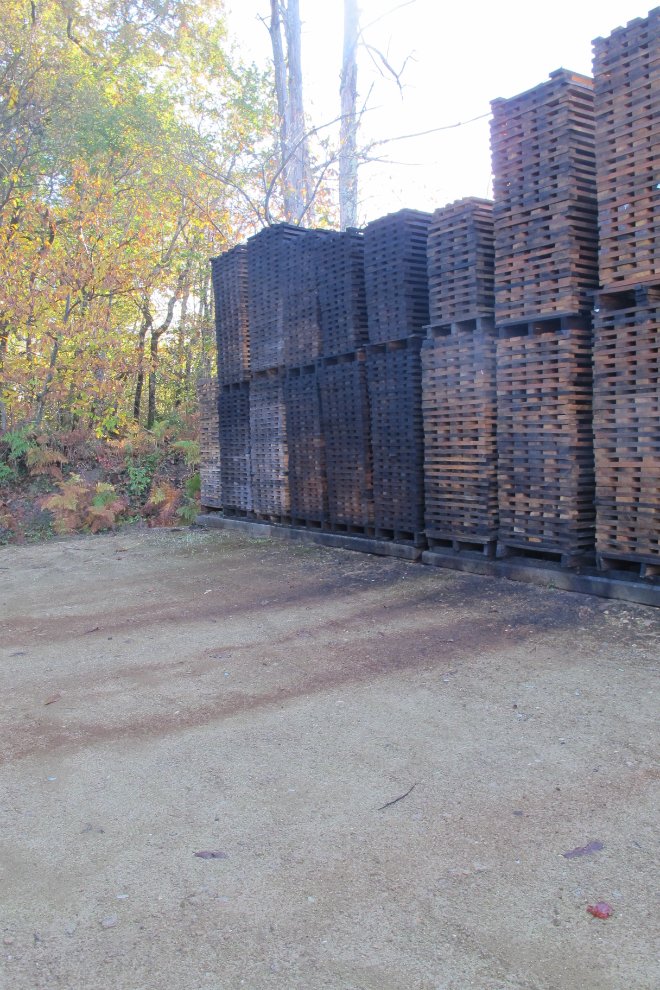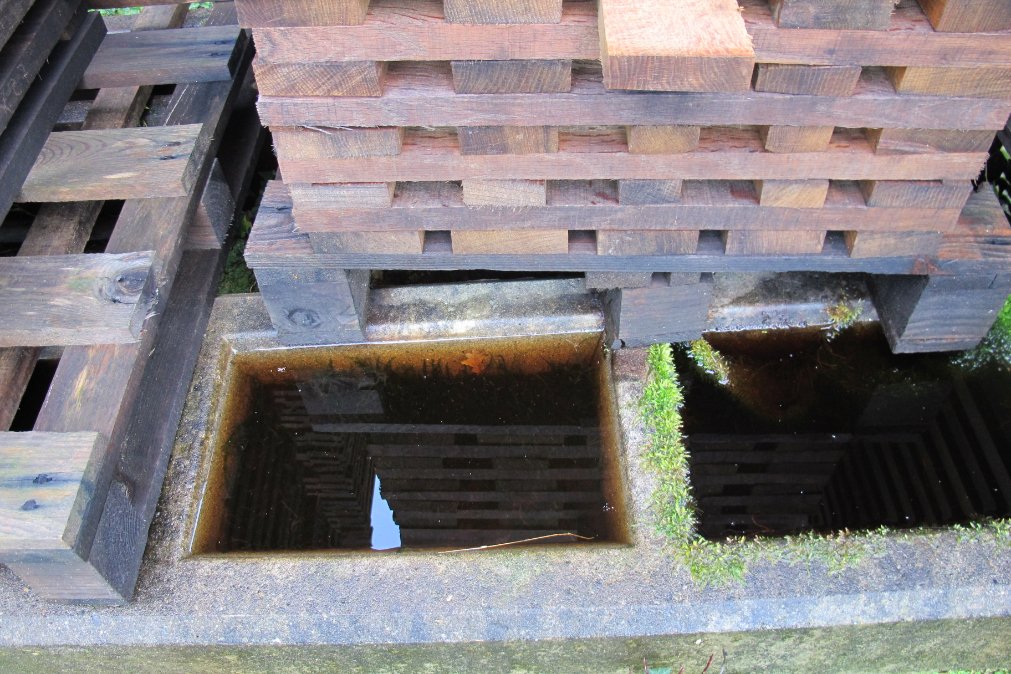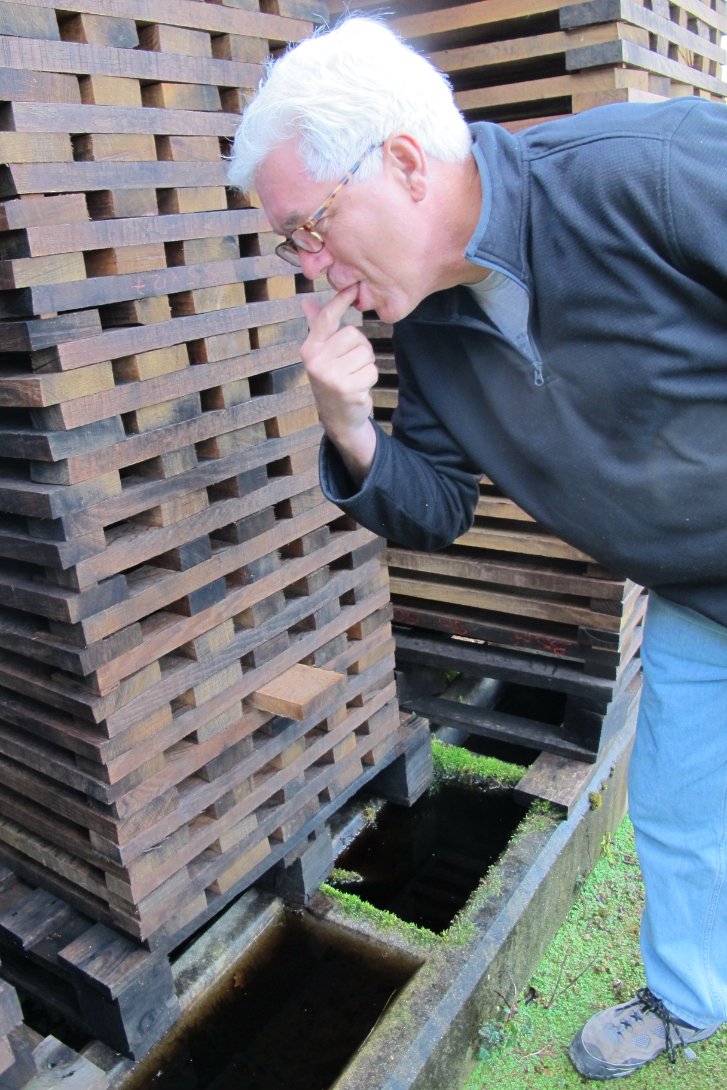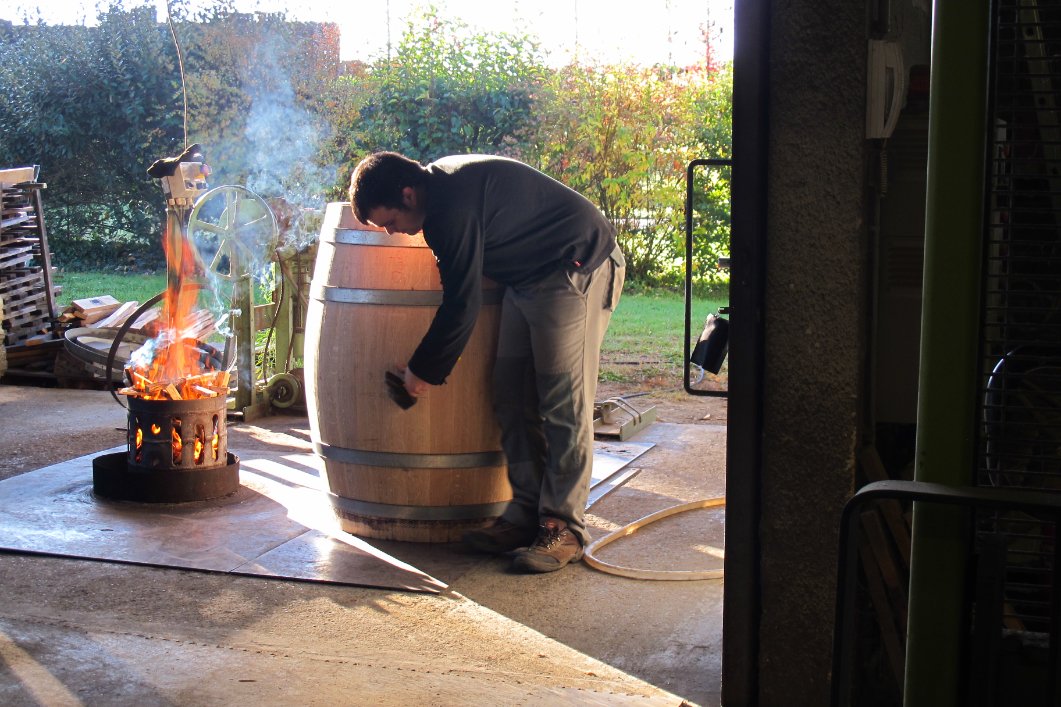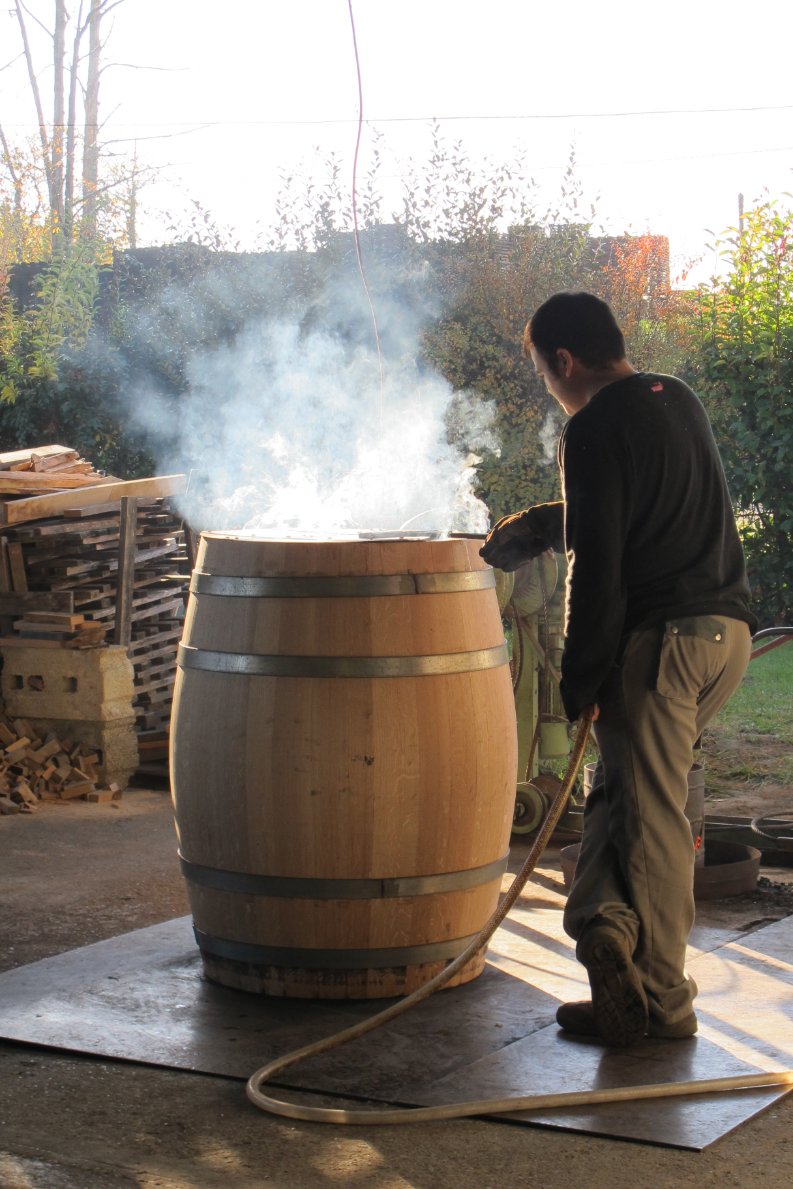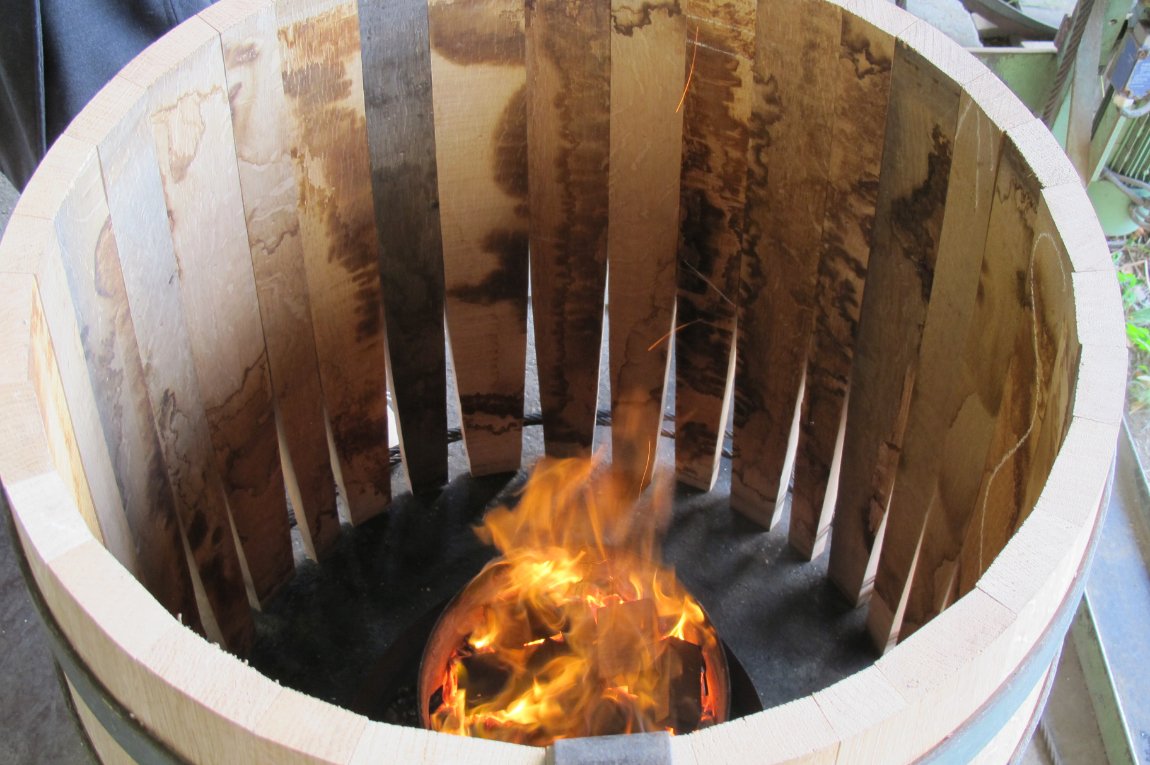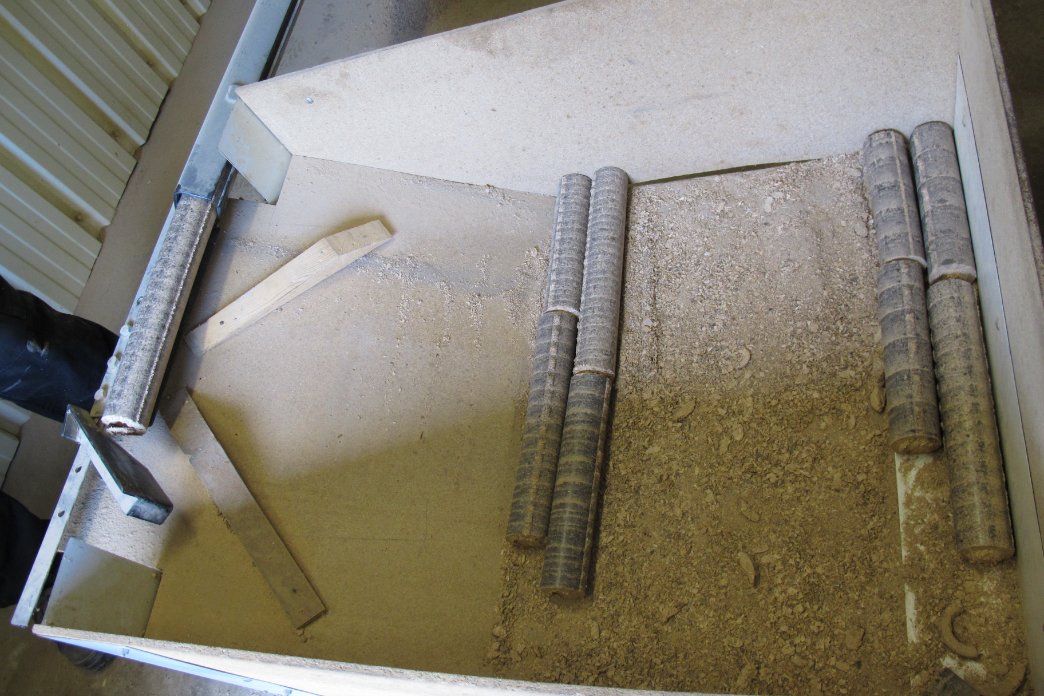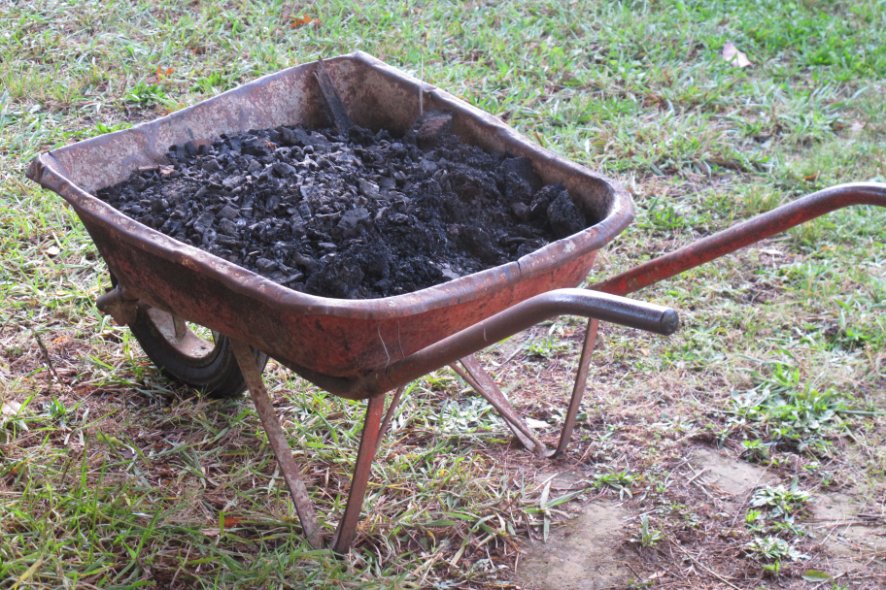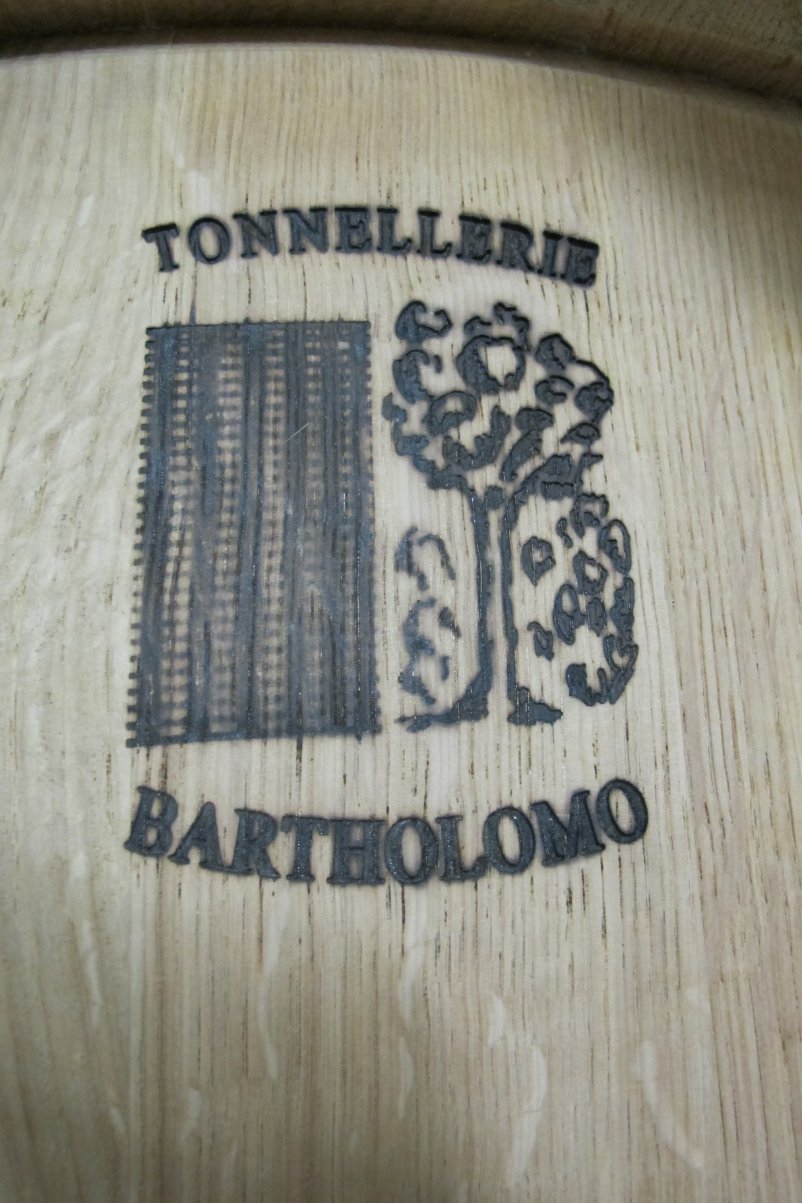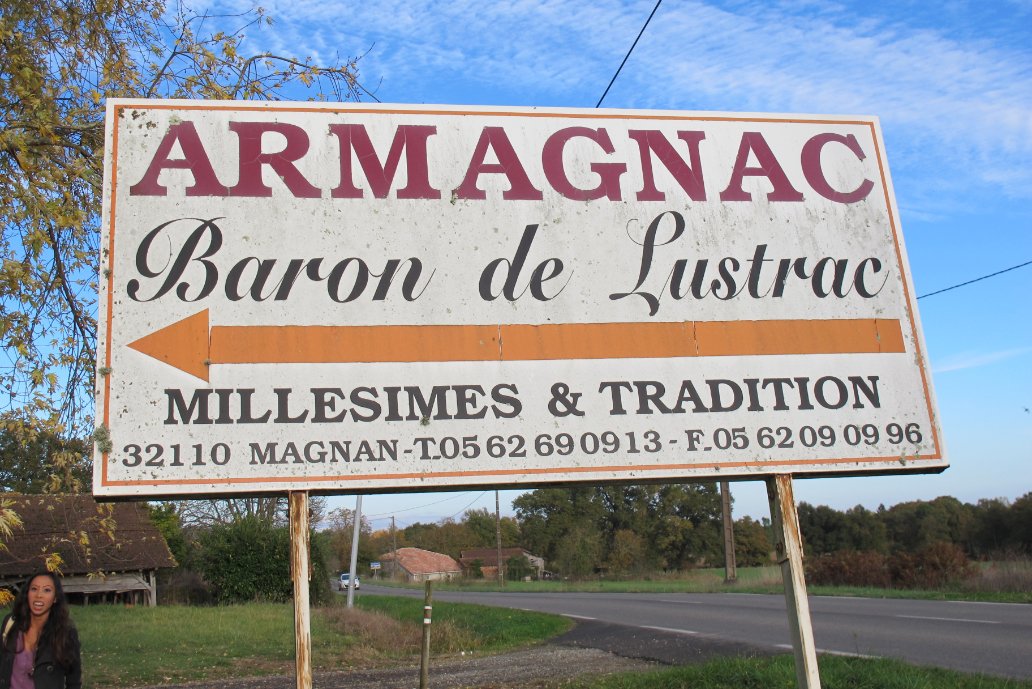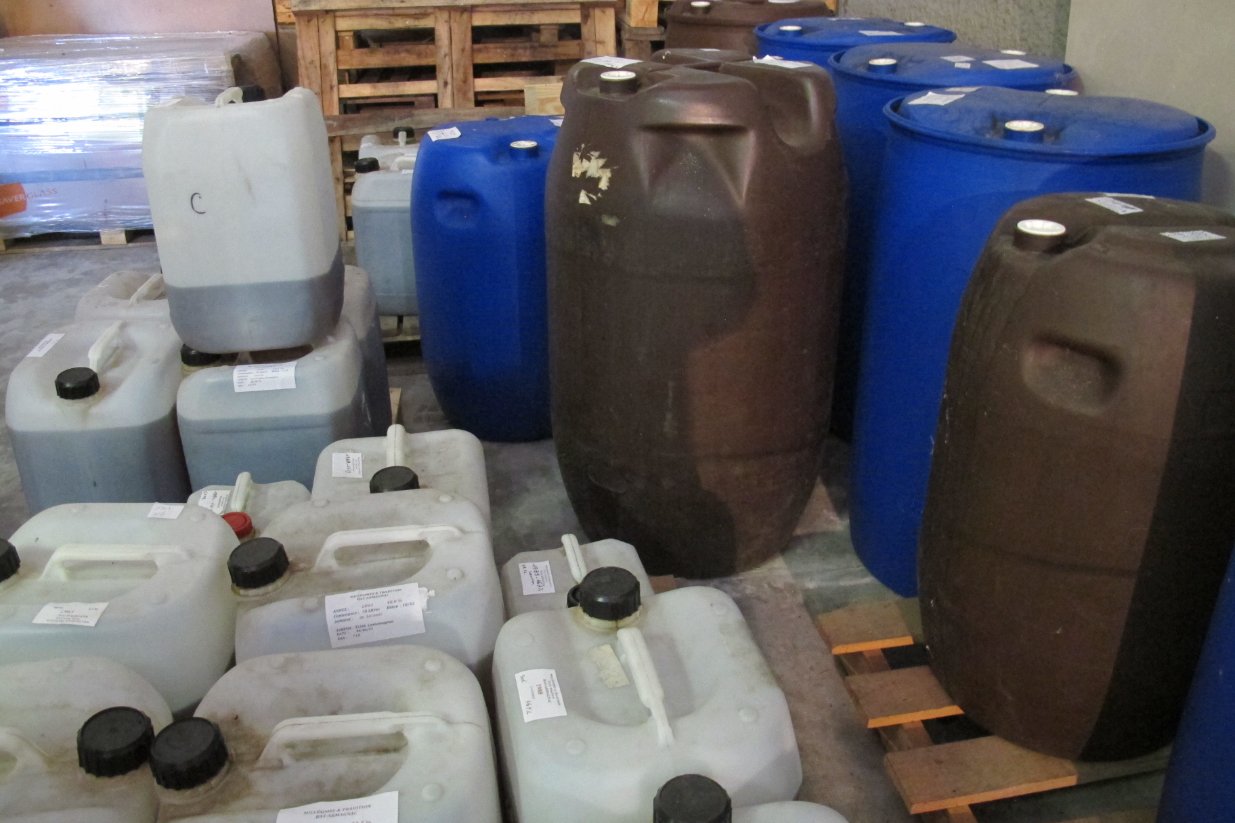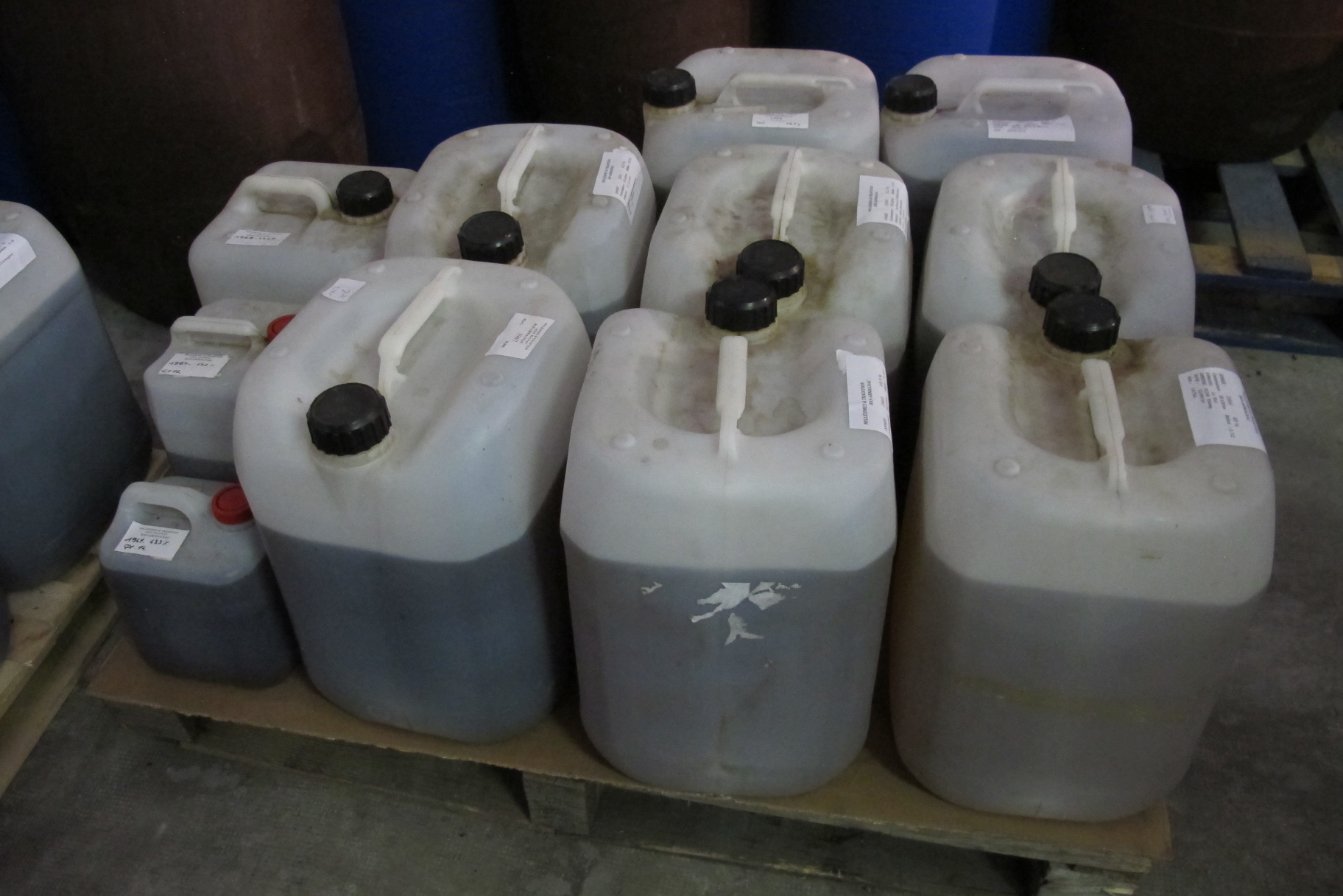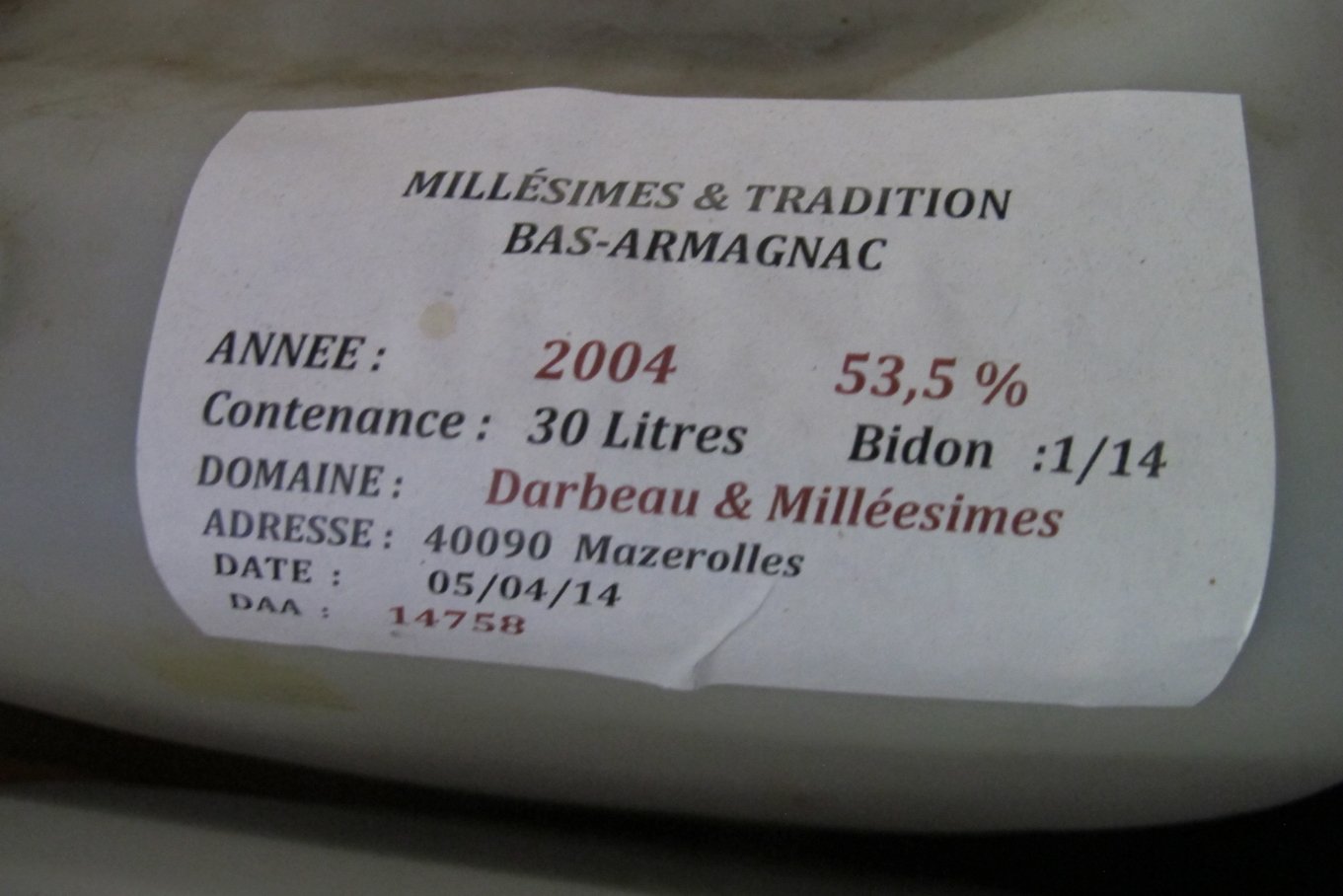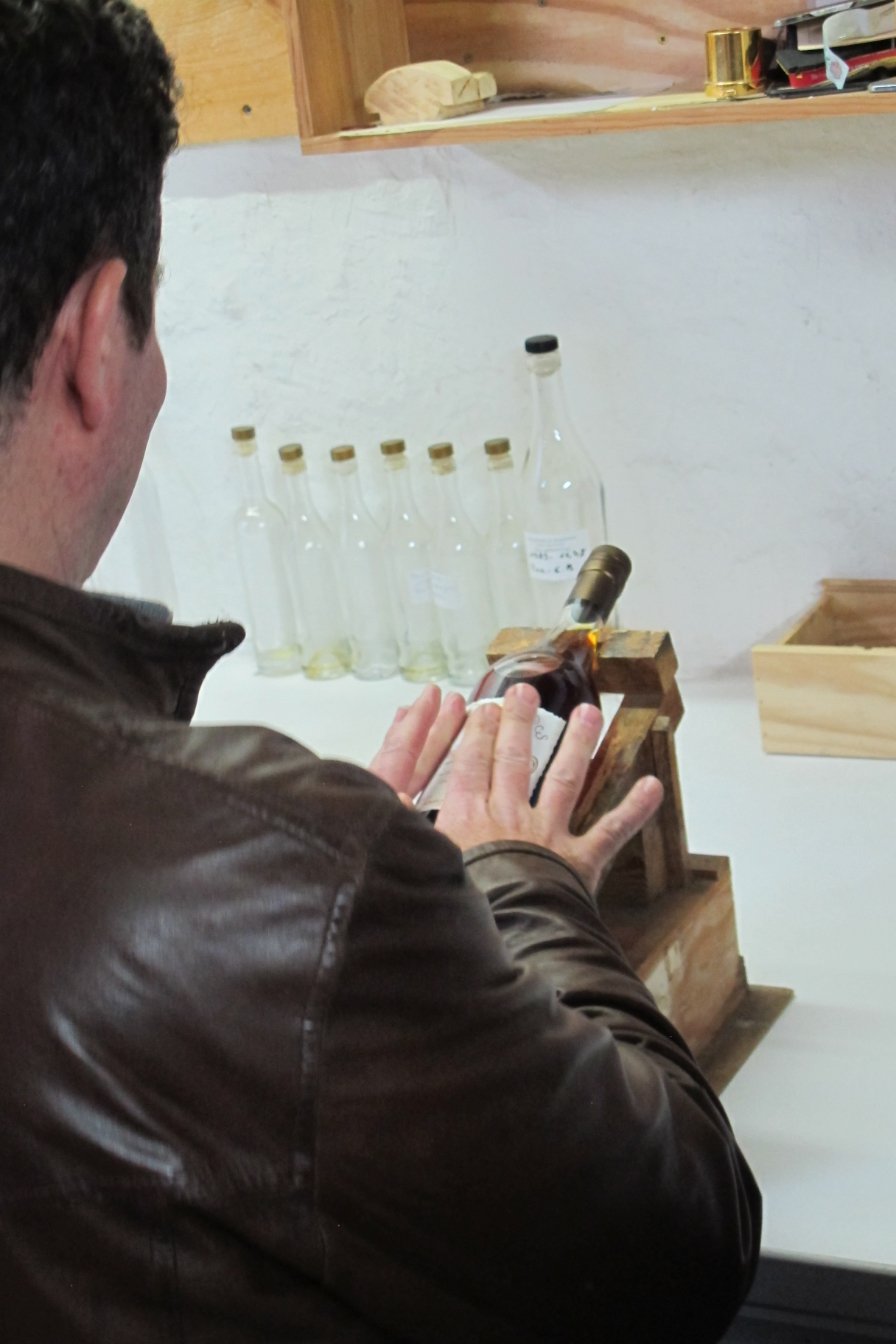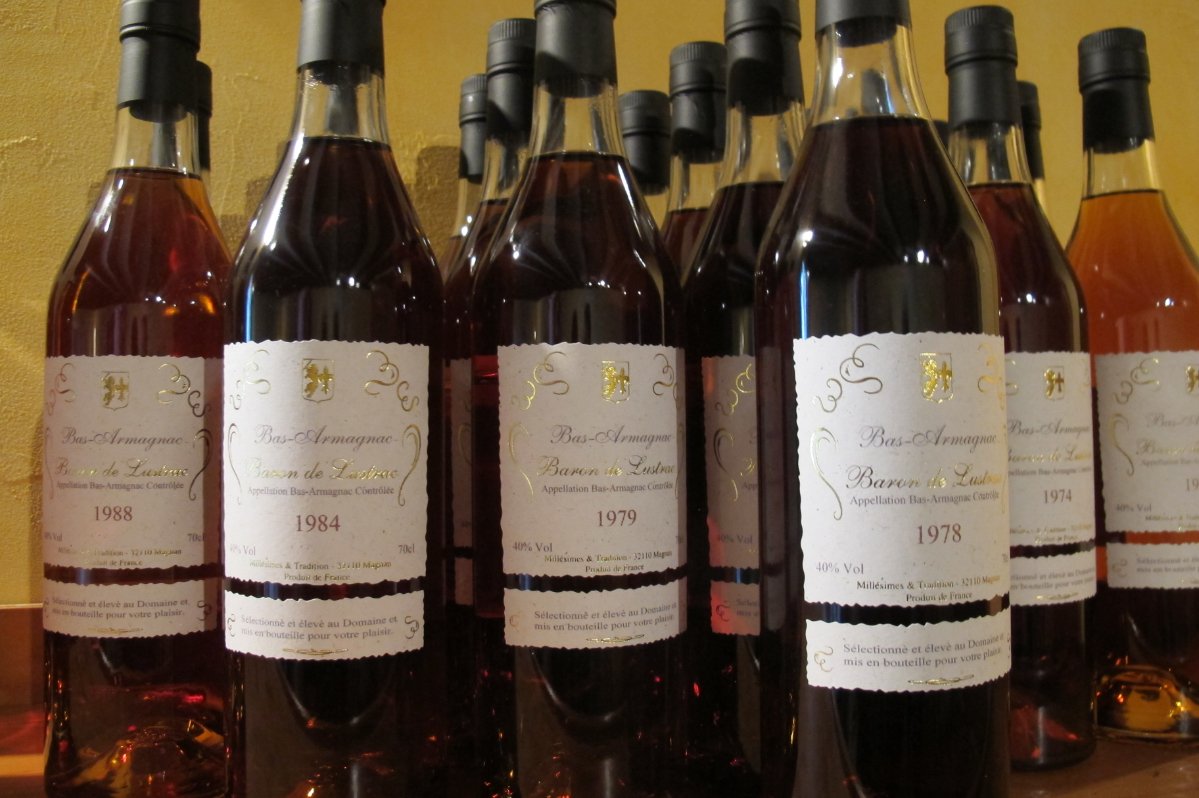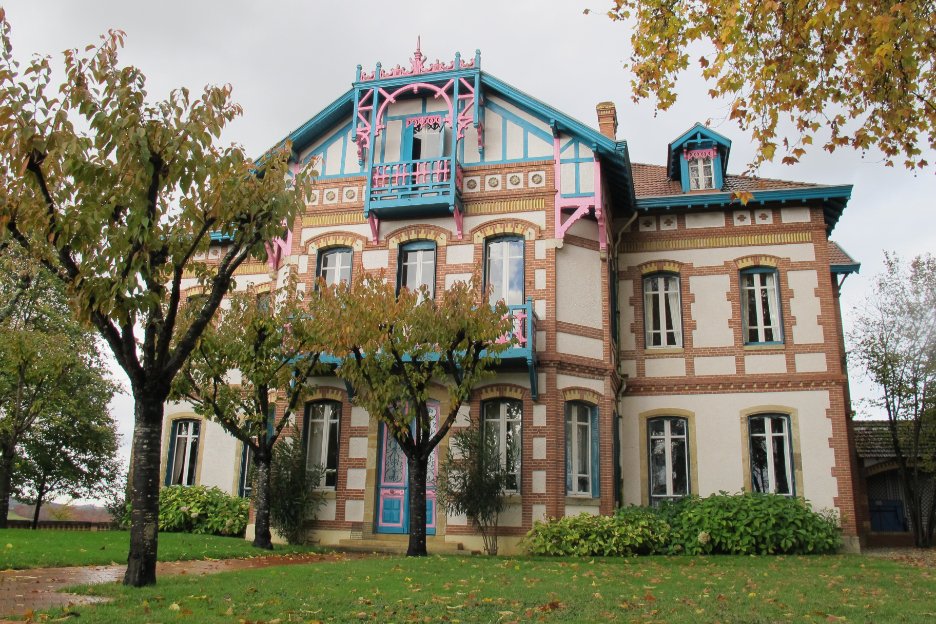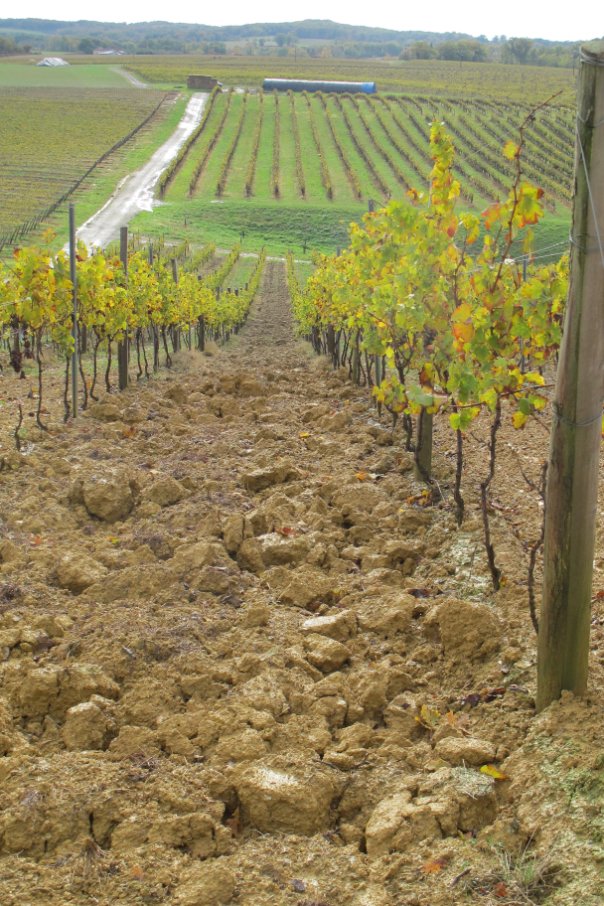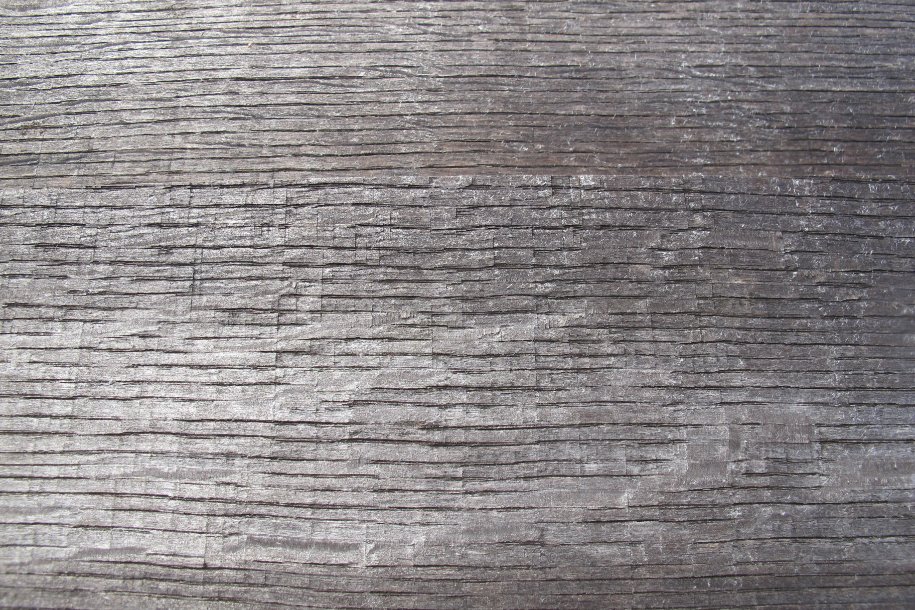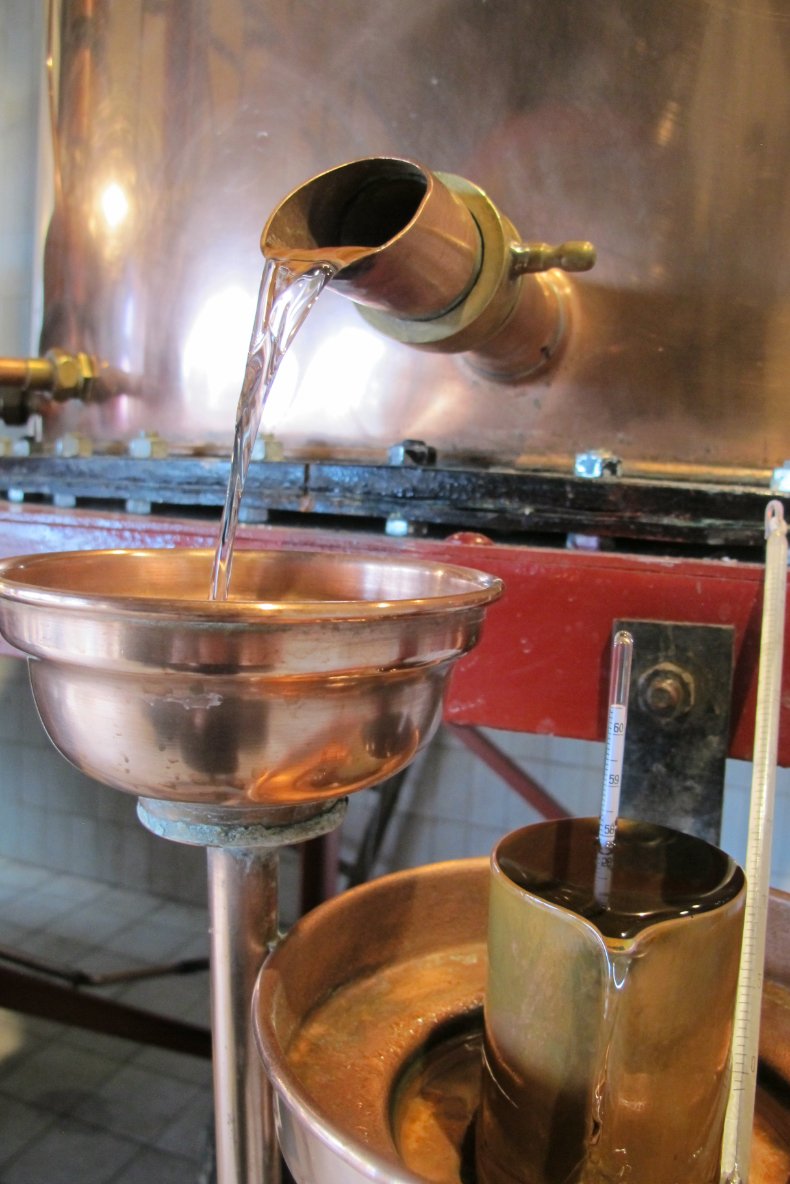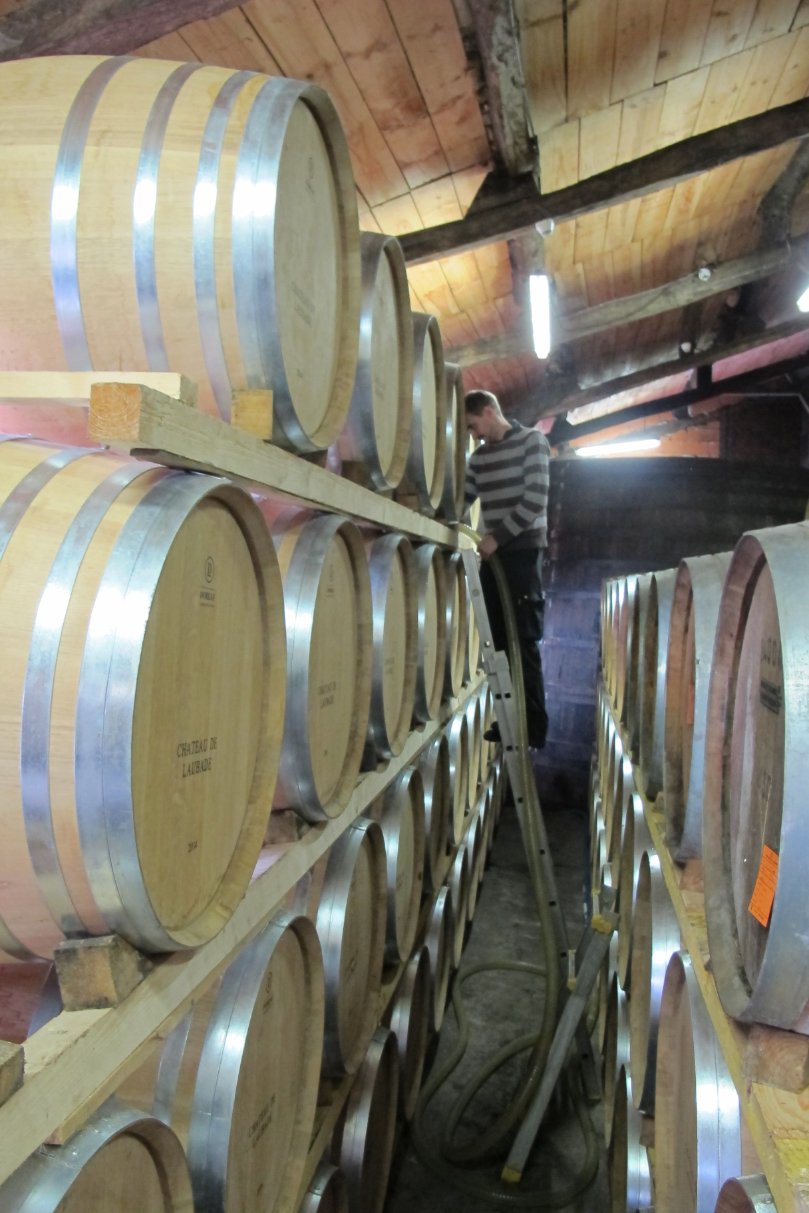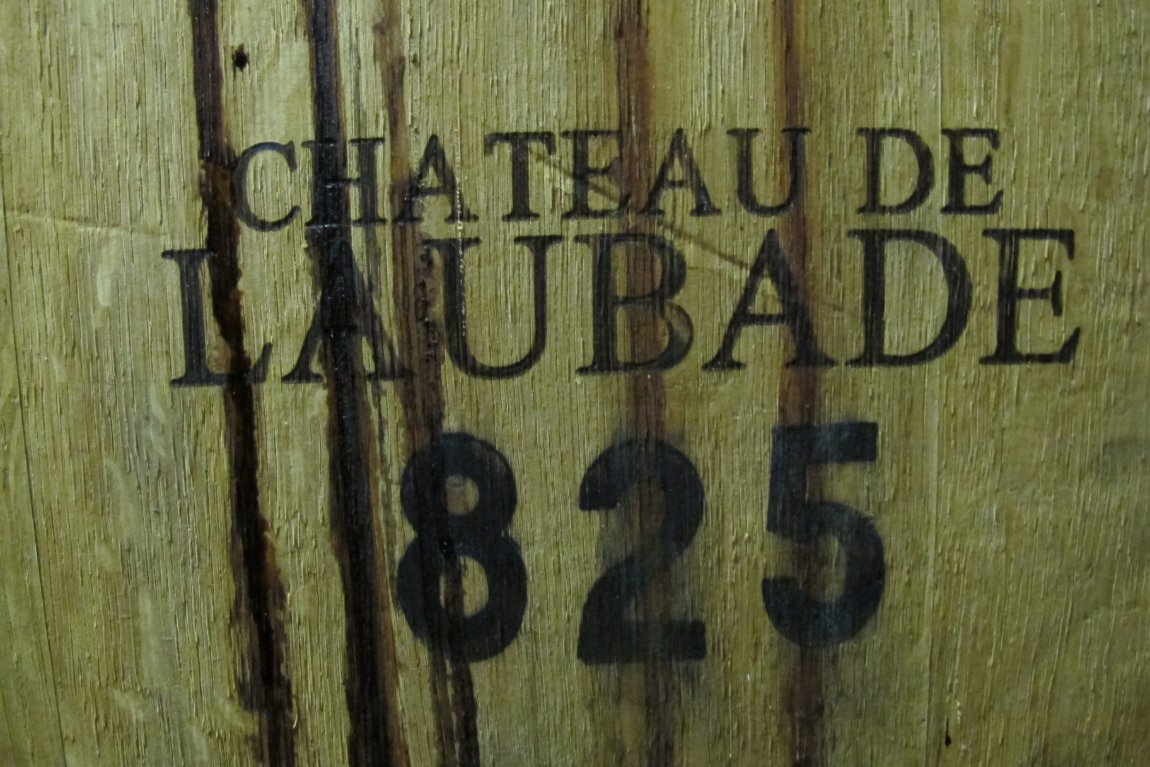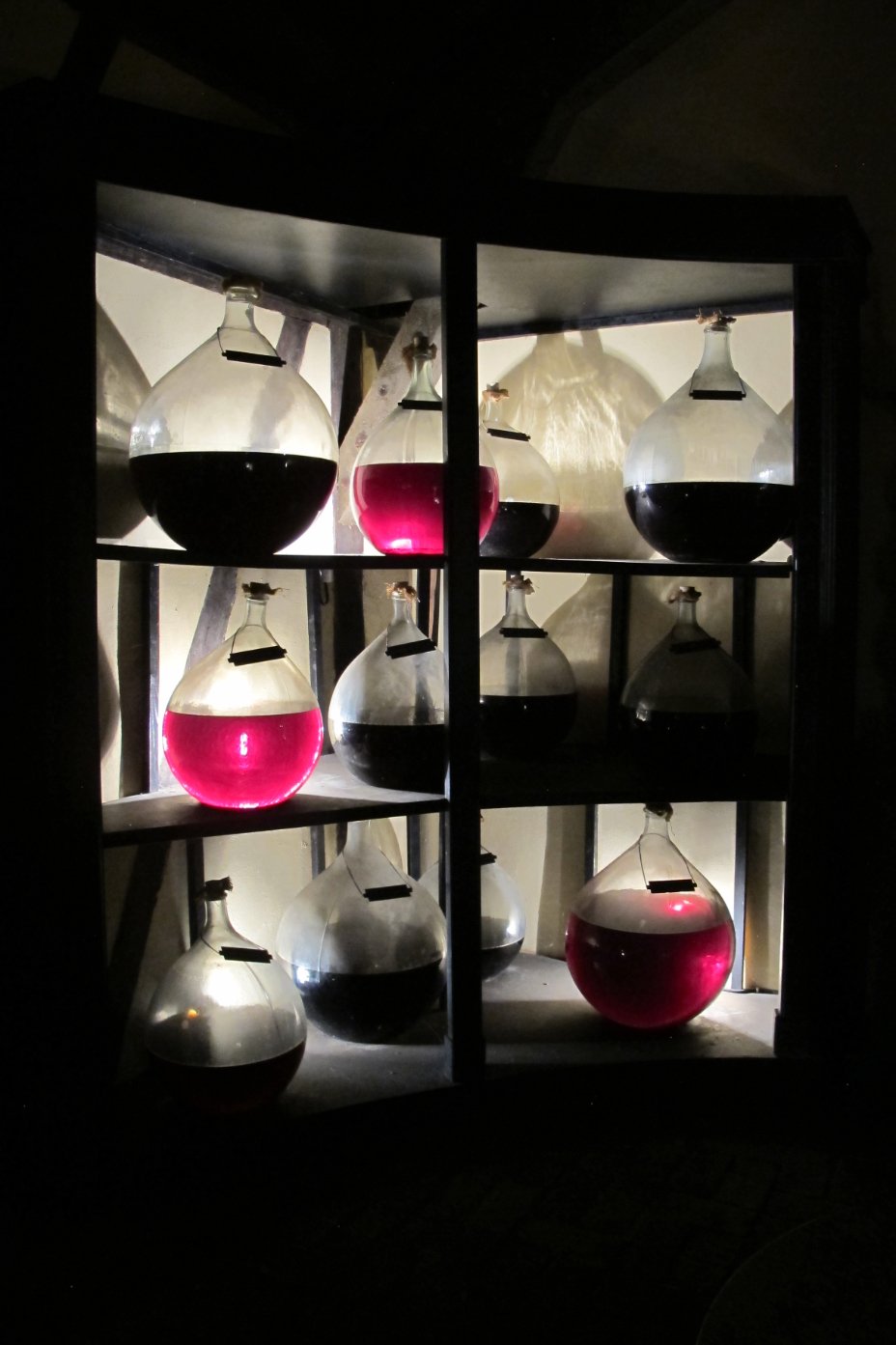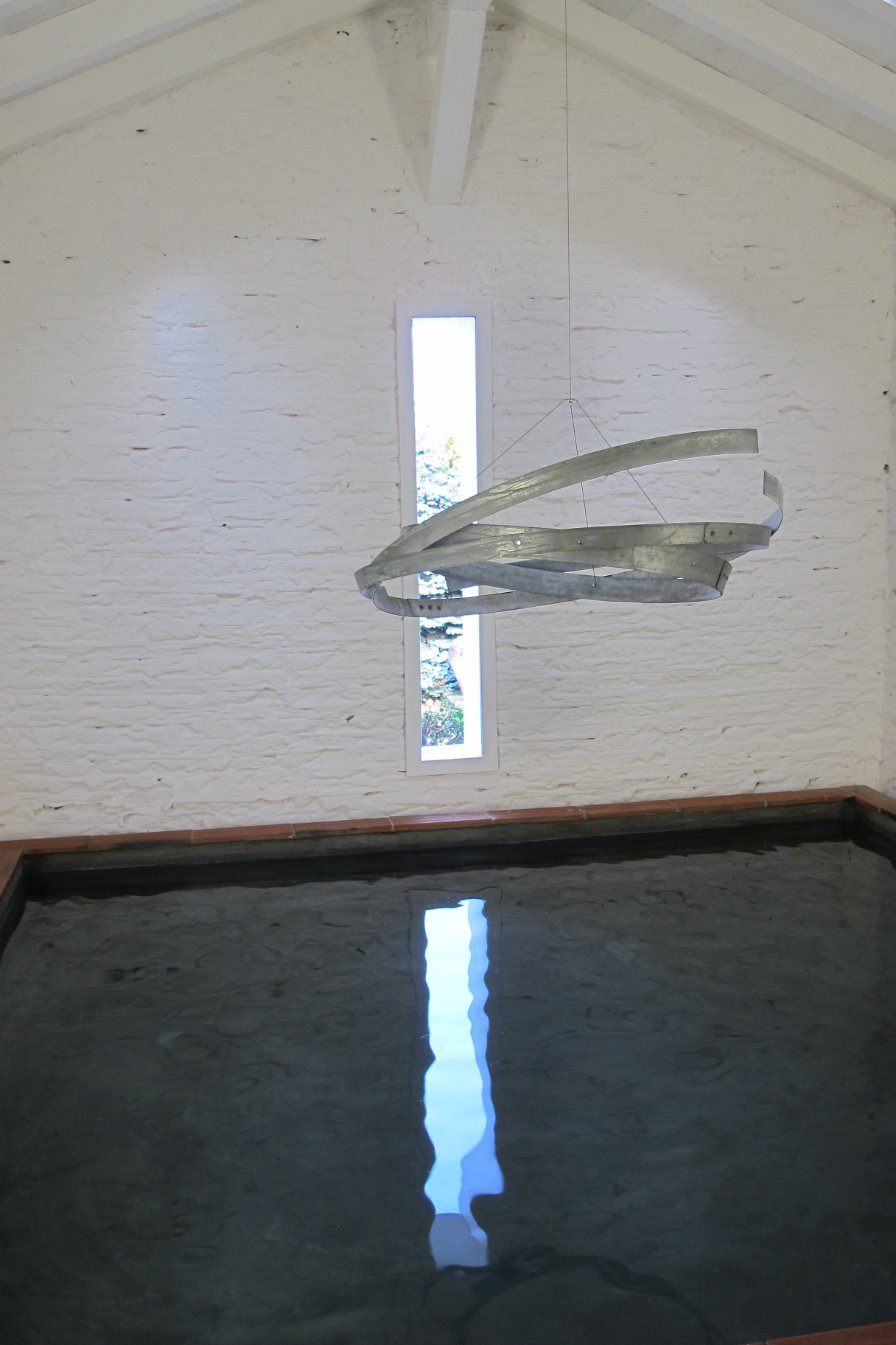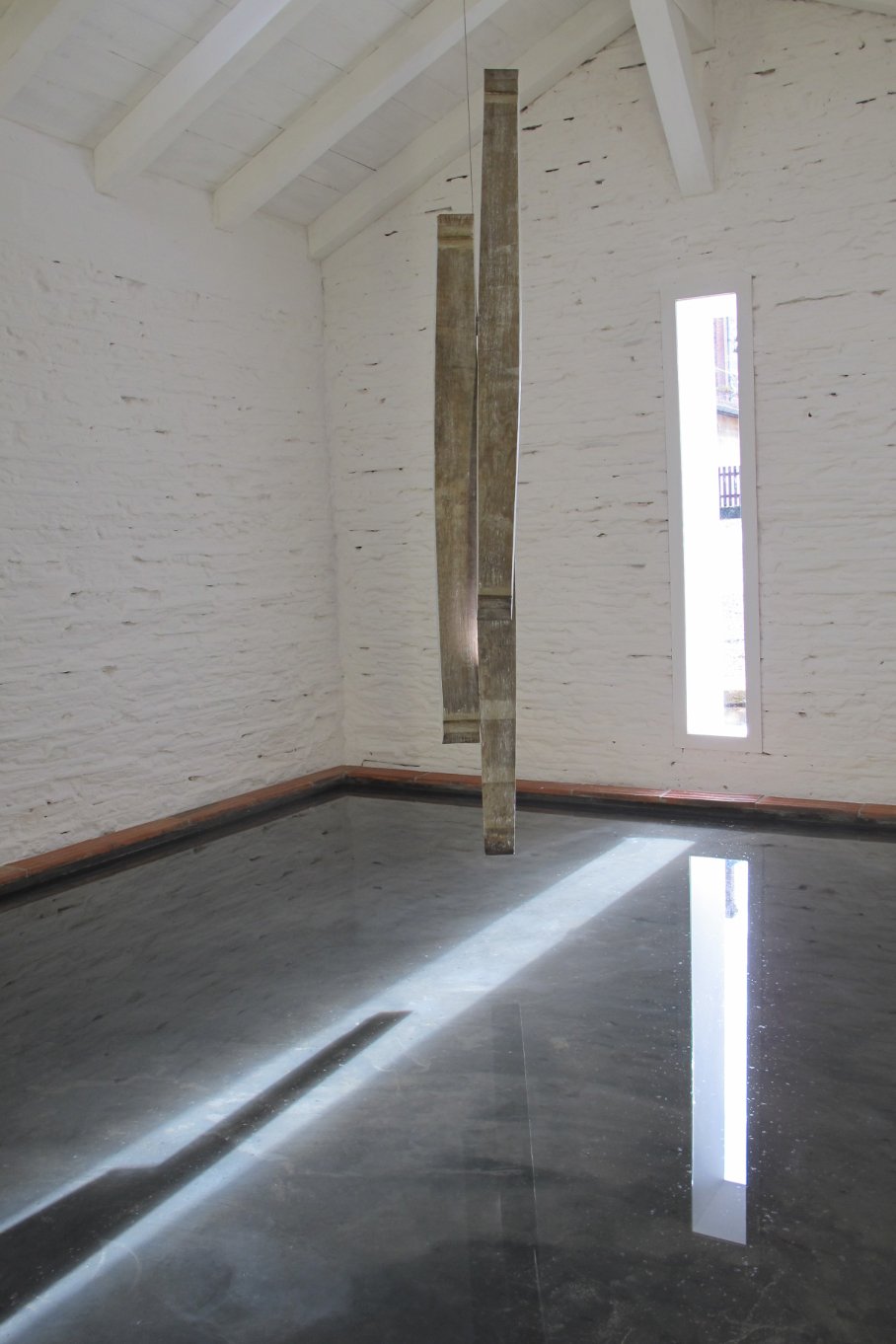This was the last of 12 armagnac houses I visited and we certainly saved the largest until the end. Domaine Du Tariquet is a gargantuan operation in the Bas Armagnac, but they mostly make table wine.
We walked all around this property, up on top of huge wine tanks (I'm scared of heights but I do it for you, dear reader), to a super modern bottling line, and then to the completely incongruously ridiculously small room in the middle of it all, where the single wood-fired armagnac still is slowly churning out eau de vie.


The family owns 900 hectares of land for both table wine and armagnac. They grow and distill the usual Ugni Blanc, Baco, and Folle Blanche (no Colombard as far as I know), but also Plant de Graisse. This grape varietal is one of ten allowed for armagnac, but this is the first place I heard of that actually used any but the top four. They say they began planting these when the future of Baco was uncertain (at one point they were going to have to get rid of all Baco vines because it's a hybrid).
For their armagnac they use only free-run juice and allow a long skin contact maceration before fermentation. For 4-5 days it sits on lees in temperature-controlled tanks. The distillation is also slow and takes 3-4 weeks. At the end of fermentation they try to distill the wine for armagnac as quickly as possible.
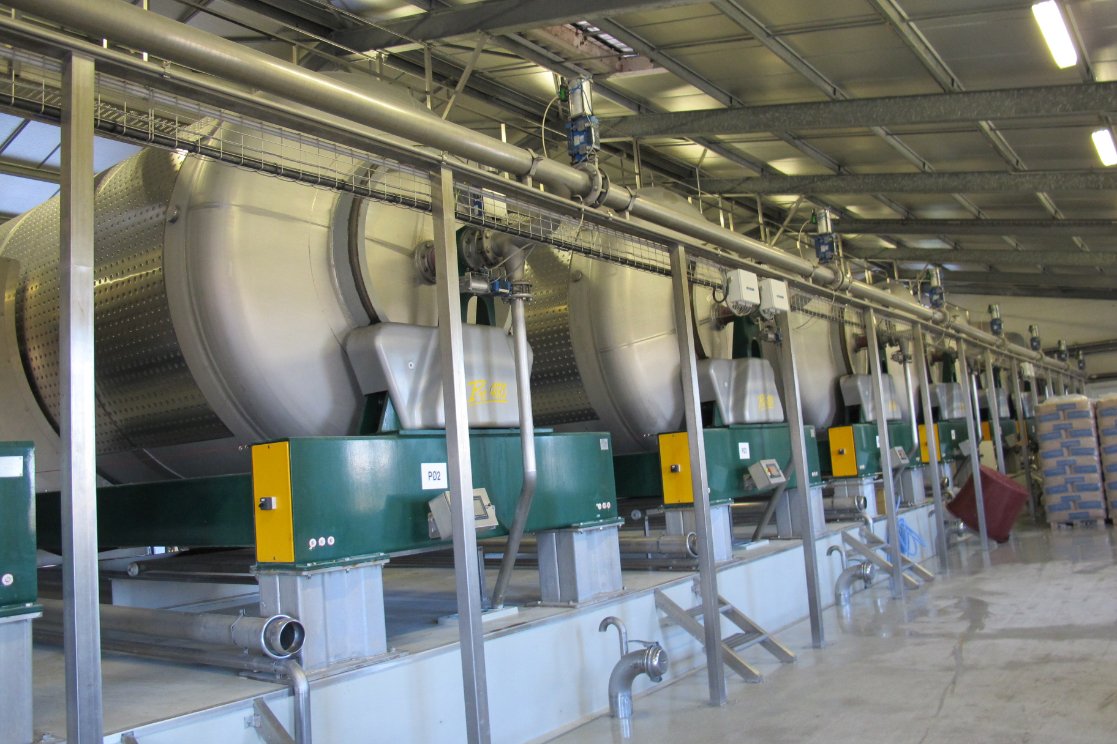
As is typical for armagnac, they distill on "light lees." As mentioned, their still is wood-fired, which seems pretty crazy given all the technology they're surrounded by. They have to add wood to the fire every 20 minutes or so. (They are purchasing an additional still soon, but I'm not sure where they'll put it.)
The still is a mobile armagnac continuous still, but it stays in place in the small room where it lives. During the distillation season, they run the still 24 hours but stop once each week to clean it.
They distill up to 55% ABV.
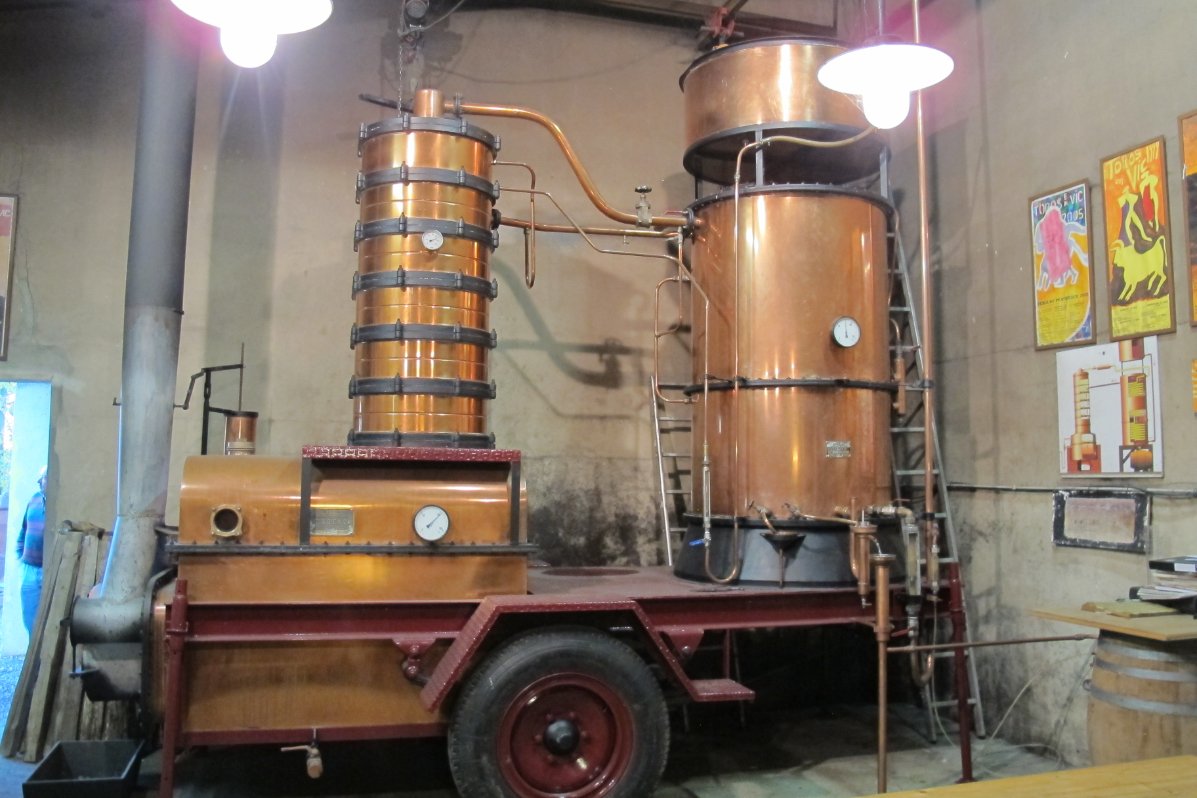
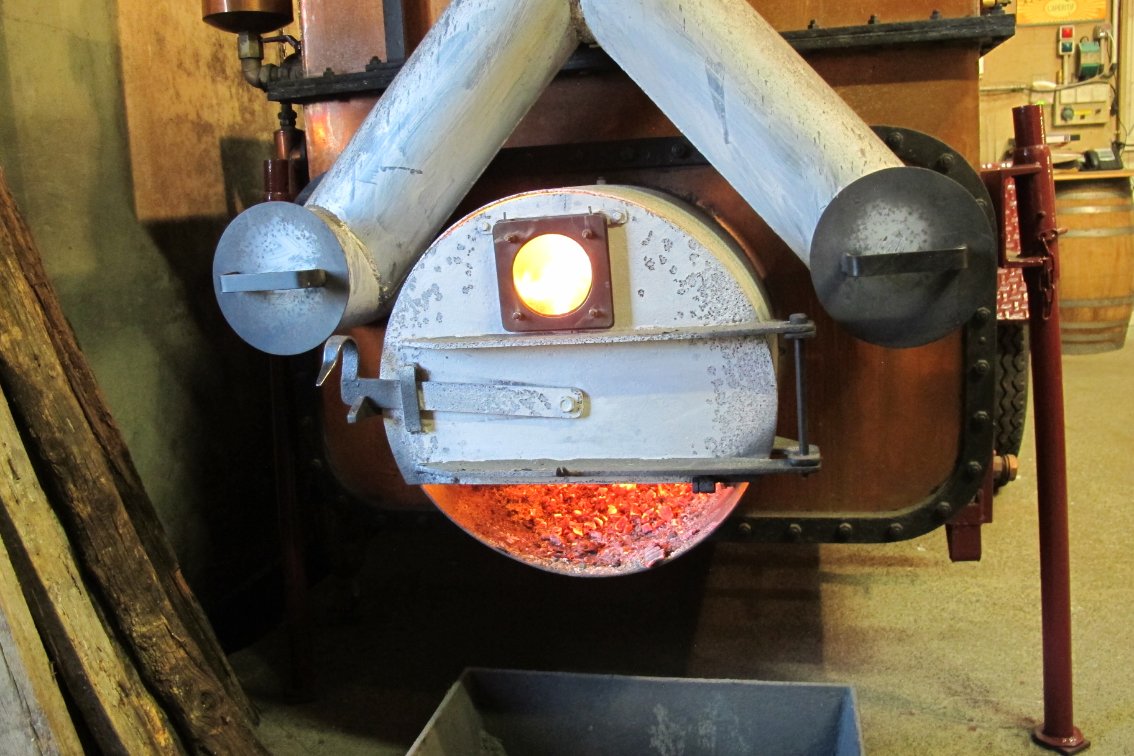
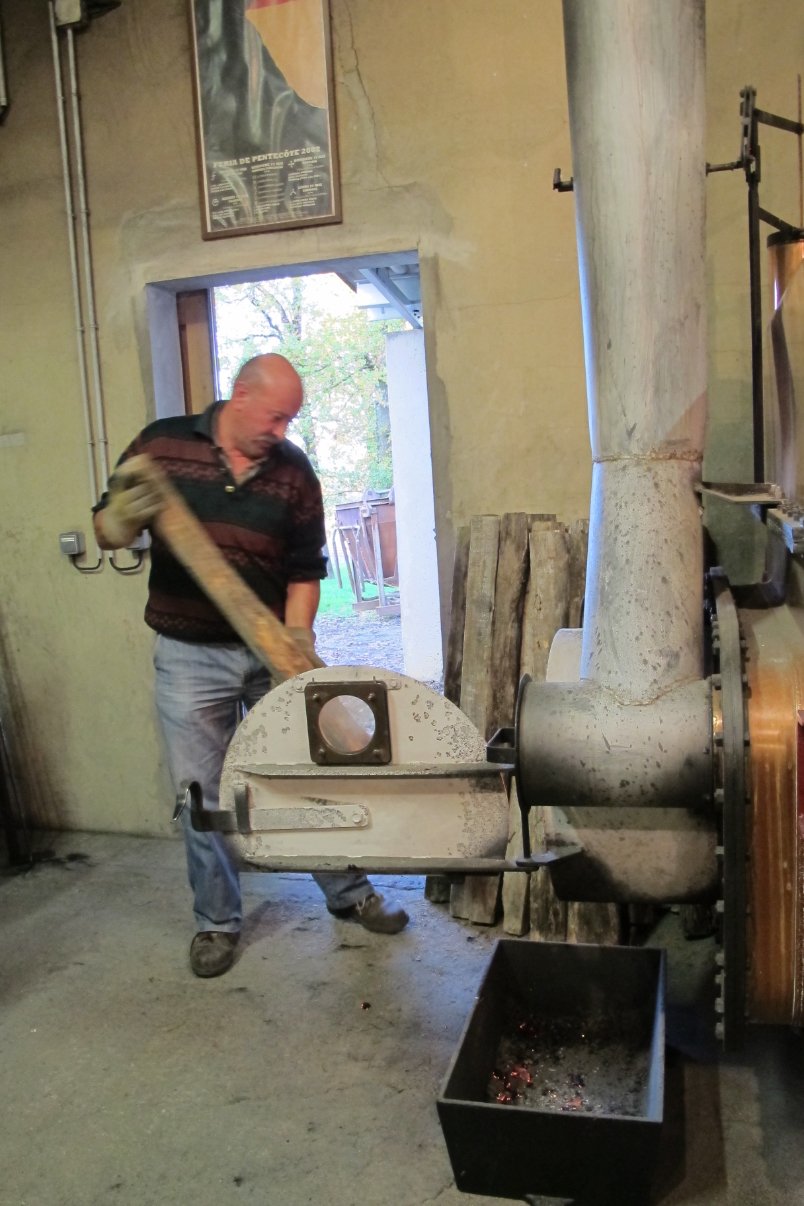



They have between four and five thousand barrels aging.
For dilution, they use the 'petite des eaux, which is a mix of water fortified with brandy to prevent spoilage at 19% ABV in their case. The water ages in barrels alongside the armagnac barrels it will dilute.
All their varietals are distilled and aged separately, not blended in the barrel. We visited an aging warehouse located at another family-owned property, a castle where our host Remy Grassa's father lives when he's in town (as one does). Most of their barrels are not made of local Gascony oak.
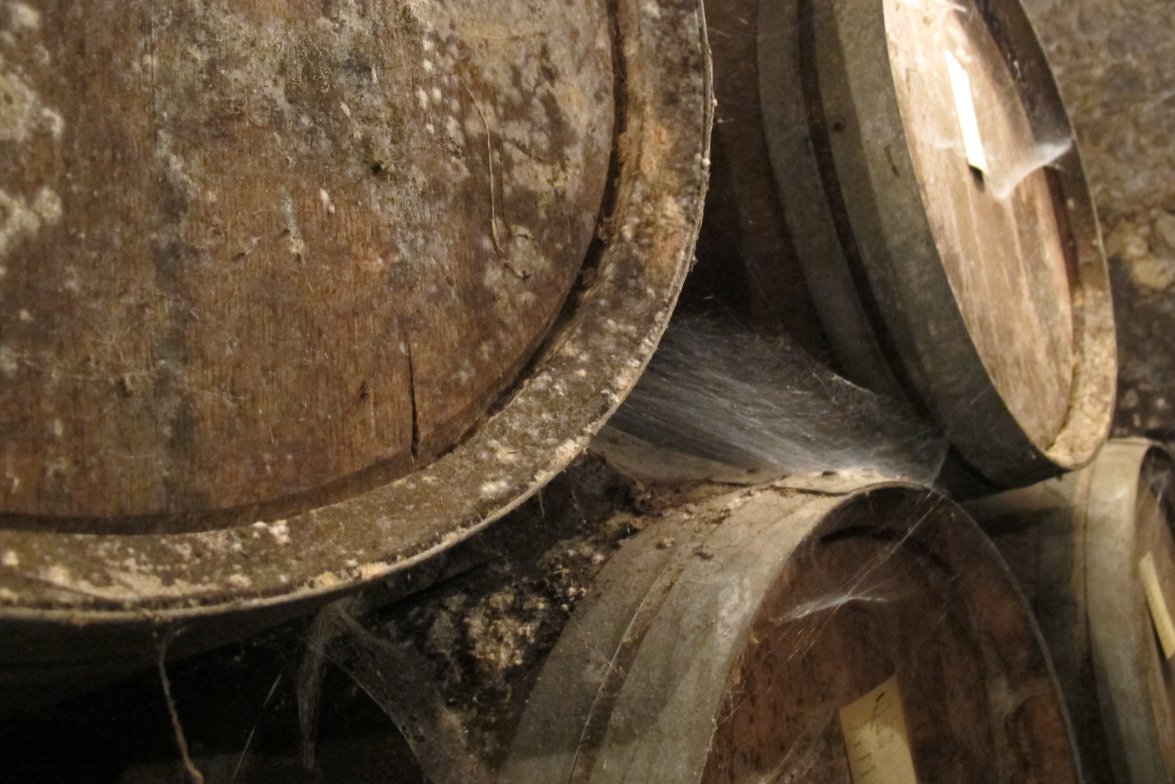
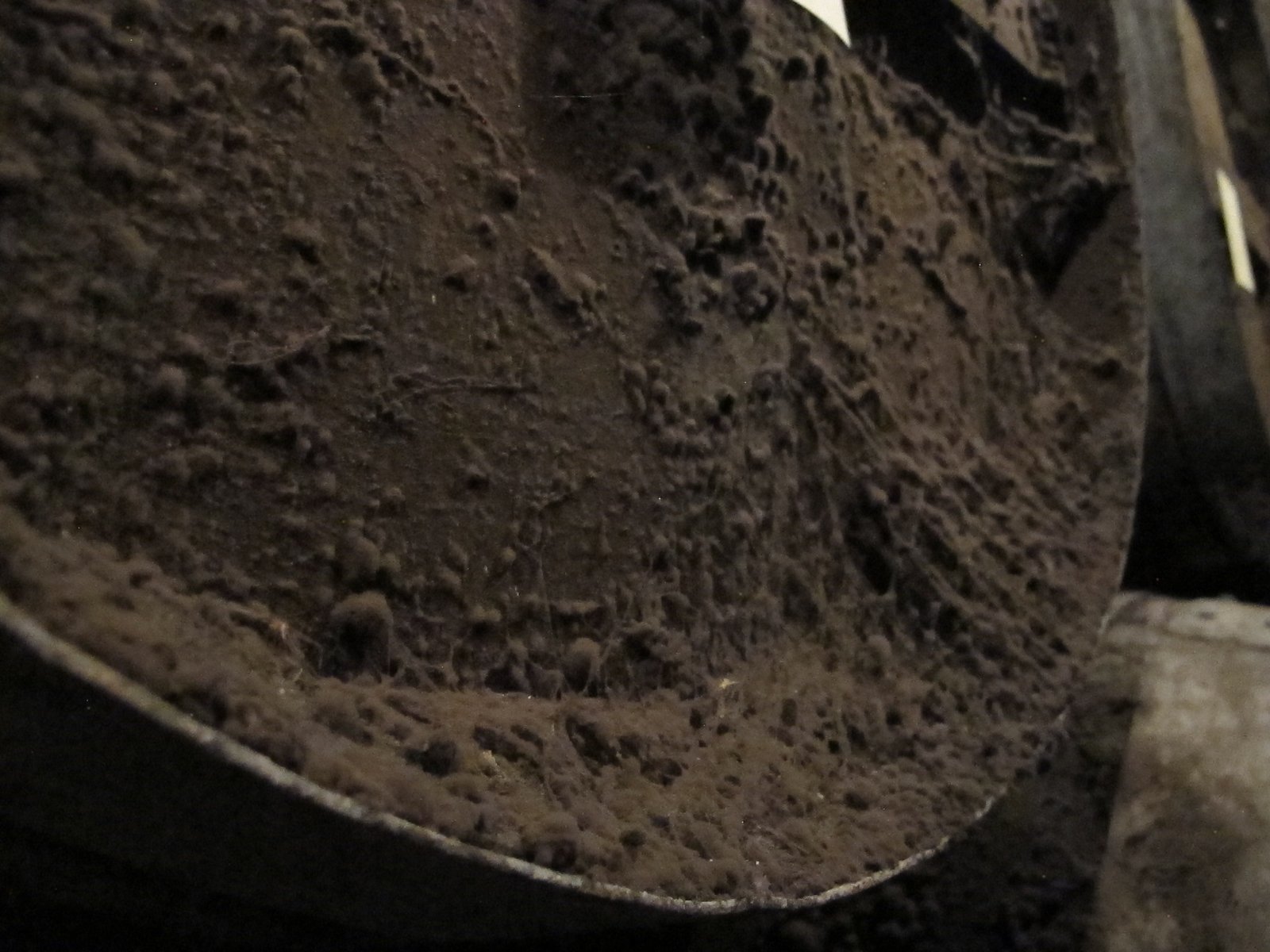
Before bottling they chill filter to -8 degrees Celsius and run it through a cellulose pad.
Unlike many brands of armagnac, they do not specialize in vintages, only releasing three or four of them every 10 years.
Tariquet is the brand of armagnac I see most often mixed into cocktails in San Francisco. Here are some probably-useless notes on stuff we tasted:
- Folle Blanche 8 year: 50.5% herbaceous, minty, sticks
- Folle Blanche 12 year old: 48.2% Mellower minty version of the 8
- Folle Blanche 15 year old: 47.2% Creamed spinach and mint, my favorite of these three
- 1995 vintage: 45.8% (60% Ugni Blanc, 40% Baco) Minty, herbaceous, singular, deep long finish, fresh and Doubleminty
- 1993 Vintage: 45.2% (60% Ugni Blanc, 40% Baco) Creamy French Oak, light
- 100th Anniversary Blend: 53.5% uses all four grape varietals. Nice mix of mint, rancio, wood, "narrow pepper", a touch smoky. Interesting/complex/fun. And of course, no longer available.
